INTRODUCTION
Introduction
Malaysia is home to fascinating mammals such as orangutans, tapirs, elephants and tigers. The country also boasts a diverse bird population, including magnificent hornbills, elegant egrets and tiny sunbirds that feed on colourful flowers. In addition, Malaysia is home to peculiar creatures like bat predators, uniquely shaped anteaters, and spiky porcupines.
Box 1 : These animals are found in Malaysia and some have become tourism attractions that lure visitors from all over the world to see them.
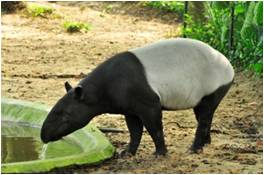
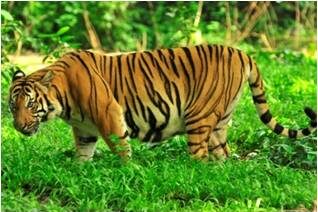
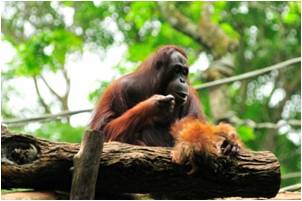
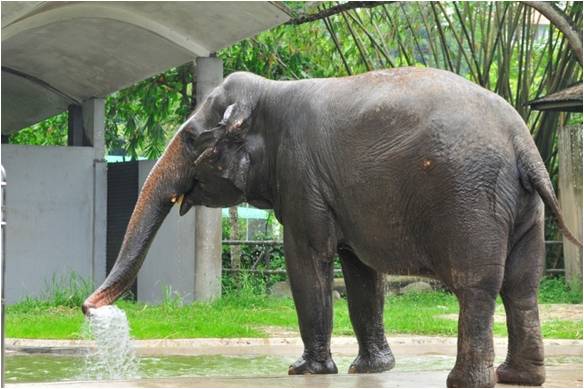
CHARACTERISTICS OF ANIMALS
Animals exhibit a diverse array of appendages that facilitate their locomotion tailored to specific modes of movement. For instance, bats possess elongated fingers covered in thin skin on their front limbs to achieve flight. Similarly, swimming birds like ducks possess webbed feet called waterfowl and palmate used to aid in propelling through the water. Various forms of locomotion, such as walking, hopping, slithering, swimming, flying, burrowing, and climbing, showcase the specialized capabilities of animals.
Plants have the capacity for self-production of food. Through the process of photosynthesis, plants convert carbon dioxide, water, and sunlight into carbohydrates and oxygen, allowing them to sustain themselves. The carbohydrates produced are used for their own growth and reproduction. Thus, plants are called ‘autotrophic’ organisms (manufacturing their own food).
Table 1 : Animal species number in Malaysia and the world, and percentage of global diversity. [1][2][3]
| Taxon | Malaysia | World | % global fauna diversity in Malaysia |
| Mammals | 286 | 4,630 | 6 |
| Birds | 736 | 9,950 | 7.4 |
| Reptiles | 268 | 7,400 | 3.6 |
| Amphibian | 158 | 4,950 | 3 |
| Marine fish | 4,000 | 13,321 | 30 |
| Freshwater fish | 449 | 8,411 | 5 |
| Invertebrates | 150,000 | 1,000,000 | 15 |
Meanwhile, animals must acquire nourishment from other organisms, making them ‘heterotrophic’ (obtaining their food from other organisms). Their diet may consist of plants, animals (living or deceased), or a combination of both.’ Herbivores’, such as cattle, elephants, selected birds, and numerous insects, exclusively consume plants. ‘Carnivores’, such as tigers, crocodiles, and meat-eating eagles, solely prey on animals, while ‘insectivores’ predominantly target insects. ‘Omnivores’, including bears and many birds, exhibit a dietary preference for both plants and animals. This fundamental distinction in nutritional requirements distinguishes animals from plants.
Within the animal kingdom, insects reign supreme, surpassing all other organisms in terms of species diversity. Among the 1.8 million named species worldwide, insects comprised an astounding one million. Malaysia in particular, boasts an exceptional richness of invertebrates with approximately 150,000 recorded invertebrate species, including insects.
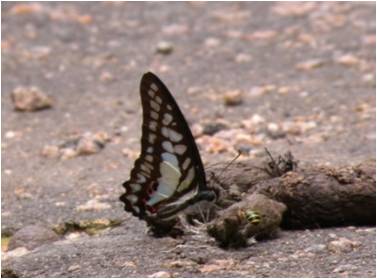
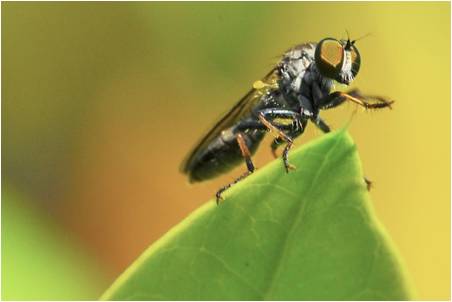
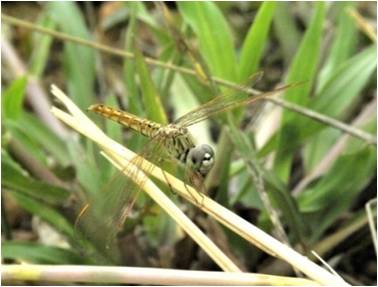
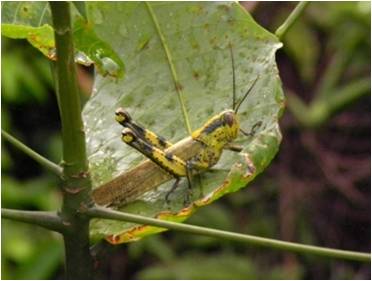

Fig. 1 : Insects are highly variable, they come in different shapes and sizes
Fig. 1 presents a captivating assortment of Malaysian insects, capturing the elegance of butterflies, the industrious nature of flies, the agility of grasshoppers and dragonflies, and the charm emanating from small beetles. This abundance underscores the substantial presence and ecological importance of insects within Malaysia’s ecosystem.
GENERAL ANIMAL CLASSIFICATION
In the animal kingdom (Animalia), the most fundamental differentiation lies between vertebrates and invertebrates based on the presence or absence of a backbone.
Vertebrates, being more structurally intricate, often exhibit remarkable mobility and coordinated movement, exemplifying the intricacies of specialized appendages. Fishes are the most basic vertebrate group that possess specialized appendages for swimming, despite their body being already supported by water. Their swimming power is contributed by side-to-side movements of the tail; steering is facilitated by a combination of the tail, pectoral fins, and pelvic fins; while the pelvic fins also assist with braking; and all fins, including the dorsal and ventral fins, contribute to stability.
The complex interplay between these specialized body parts is characteristic of vertebrate locomotion, be it the leaping of frogs, the slithering of snakes through the undergrowth the crawling of crocodiles or monitor lizards, or the flight of birds. Even within a single group, various forms of locomotion can be observed. While most birds are capable of flying, some are not, and among mammals, elephants move with a stately gait, bats fly, dolphins and whales swim and dive, and gibbons employ their arms for swinging between branches. The diverse examples of vertebrates depicted in Box 1 serve to illustrate the versatility and adaptability of these animals, united by the common trait of possessing a backbone.
In contrast, invertebrates display considerably less structural diversity. The body architecture of invertebrates is primarily influenced by the available skeletal materials. Certain sponges lack a distinct shape, as their skeleton comprises of numerous tiny silica crystals, each possessing its own characteristic shape. These crystals are densely packed, resulting in what appears to be a shapeless mass. On the other hand, corals secrete calcium carbonate that give rise to the recognizable formations commonly encountered on seashores (refer to Fig. 2).
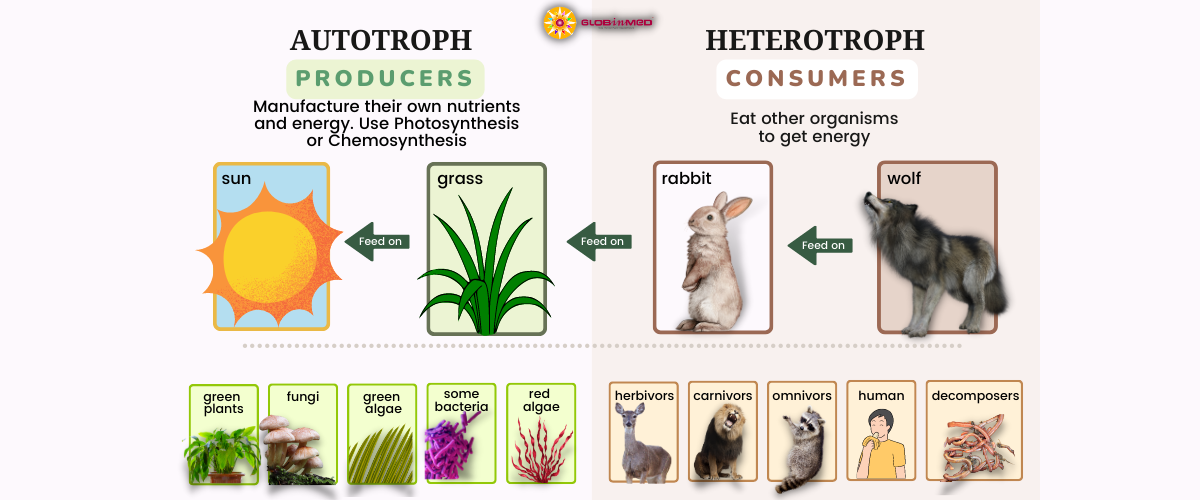
Both of these invertebrate groups (sponges and corals) are generally immobile or sedentary, relying on water movement to transport nutrients and oxygen towards them. Only their larvae exhibit mobility, drifting along with the currents. Consequently, any alterations in their body structure are primarily governed by the surrounding water currents.
Worms, devoid of any skeletal structures, possess a soft and flexible body that enables them to move through side-to-side wiggling as well as forward and backward contraction and expansion. This mobility is attributed to the presence of body fluid, known as hemolymph, which fills the space within each segment of their body and acts as a fluid skeleton (refer to Fig. 3). The hemolymph can be compressed by surrounding muscles, resulting in a change in the overall shape of the body segment.

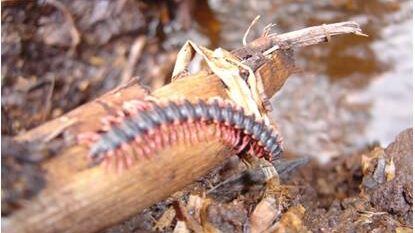
The acquisition of an exoskeleton, or external skeleton, represents a significant advancement in the body architecture of invertebrates. This characteristic is exhibited by arthropods, such as millipedes, centipedes, spiders, prawns, crabs, and insects. The outer surface of their bodies is coated with a hardened proteinaceous material, providing them with a define shape. It is this external skeleton that distinguishes each of the arthropods. For instance, Fig. 4 illustrates a millipede with numerous jointed segments that form an elongated body.
A more complex classification system in the animal kingdom is based on evolution. The animal evolutionary tree, represented by Fig. 5, offers the simplest overview of classification. At the most basic level, animals can be classified into single-celled organism, classified as phylum Protozoa. Notable examples of protozoa include the malaria parasite Plasmodium spp. and the slipper-shaped Paramecium. Multicellular organisms then emerge from this phylum of single-celled animals.

The initial group of multicellular animals is referred to as sponges, falling under the phylum Porifera. Sponges are characterized by their composition of aggregated cells that secrete a fibrous protein skeleton around themselves. Their classification as poriferans is due to the presence of numerous pores within their bodies. Certain types of sponges can be cultivated, collected, treated, and dried for various purposes.
Box 2 : Coral VS Sponges
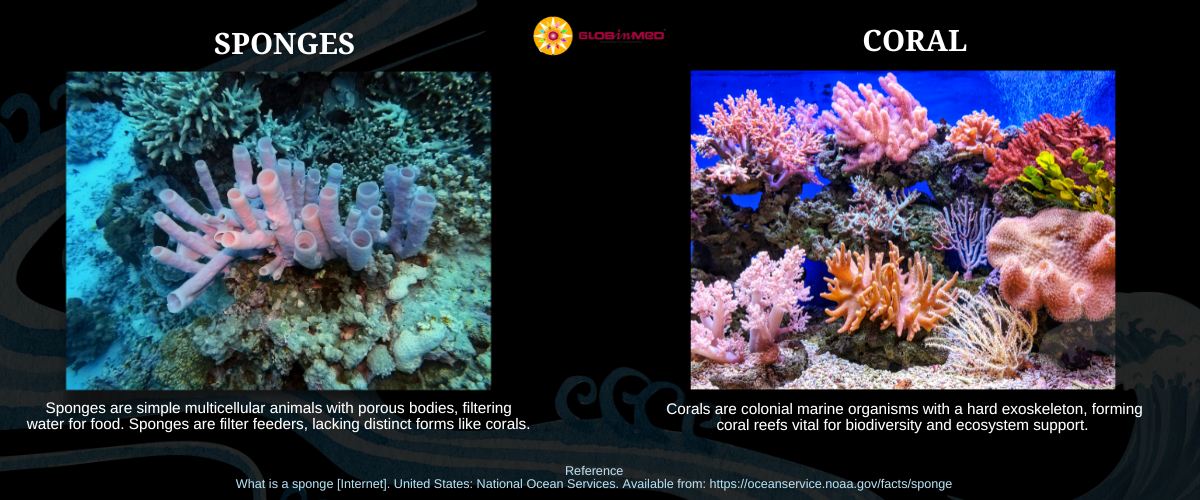
From ancestors of sponges evolved the corals and more sophisticated anemones. In Fig. 6, some coral and anemone could be seen in an aquarium. These animals are primarily sedentary, relying on water currents to facilitate their movement. However, they can manipulate their arms (tentacles) to guide food particles towards their central mouth, located within the disc-shaped body.

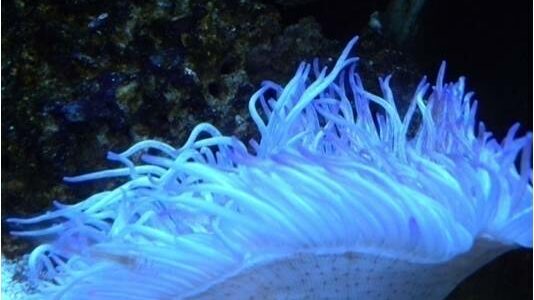
Fig.6 : Coral and sea anemone are seen in an aquarium.
Flatworms, being the first animal group to exhibit free movement and possessing three layers of tissue, represent a significant step in animal evolution. However, their movement is limited to peristalsis along the lower surface, as they lack specialized body parts for locomotion. Certain flatworm species are well-known to the medical field due to their ability to cause harmful diseases, such as ringworms and tapeworms, which are endoparasites that infest humans, posing health risks.
The subsequent animal group to evolve achieved a predominantly non-parasitic lifestyle within their habitats. One notable example is the phylum Mollusca, which includes capability of inhabiting terrestrial environments. Land snails, like the Giant African snail (Achatina fulica), thrive by feeding on plants in terrestrial ecosystems. However, certain land snail species, such as the small and tightly coiled Bradybaena, can become crop pests. Fig. 7 illustrates two common land snail varieties, Achatina fulica and Bradybaena sp.

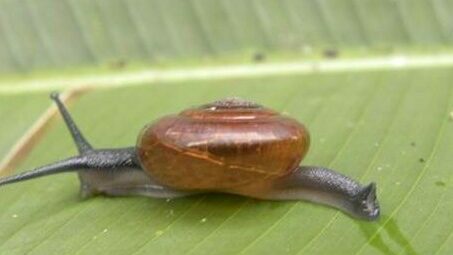
Fig. 7 : On land the two commonly seen snails are Achatina and Bradybaena.
There are many more aquatic snails, and in the photograph shown in Fig. 8 are several species of snails found in a mangrove ecosystem. Besides snails, mollusks comprise of bivalves (with two opposing shells) and squids/cuttlefish/octopus. Many species of mollusk are food for people (Fig. 9).
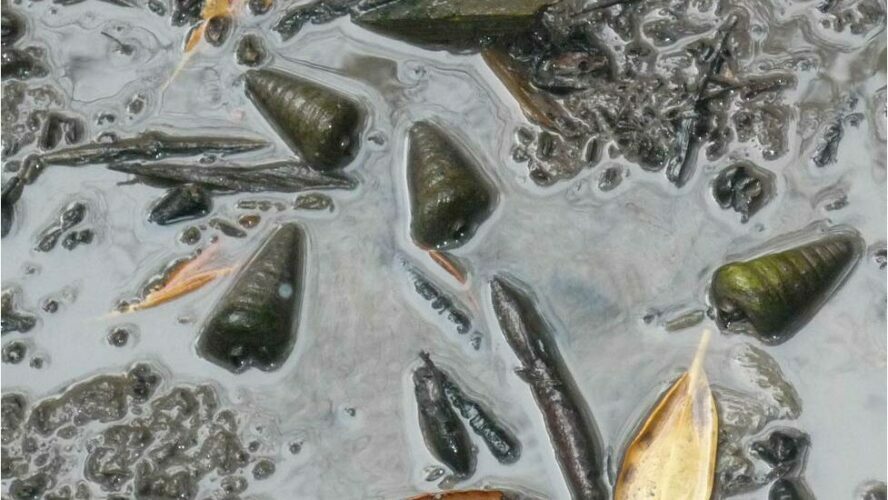
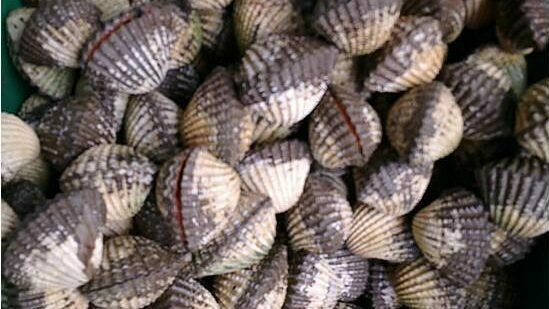
From Fig.5, the next animal group along the branch that leads to the arthropods are the earthworms/leeches/polychaete or the phylum Annelida. The main characteristic of this animal group is that their bodies are composed of many segments, thus they are known as the segmented worms. Fig. 10, 11 and 12 show the three major groups of annelids – earthworms (Fig. 10), the polychaete (Fig. 11) and the leeches (Fig. 12).

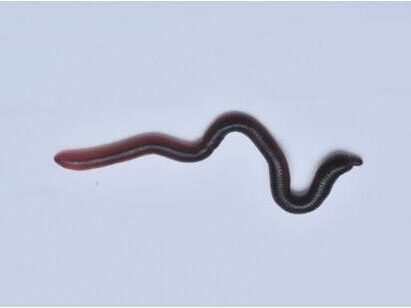
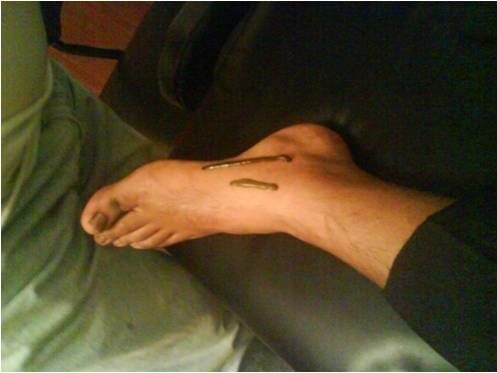
DIVERSITY OF ANIMALS IN THE WORLD AND MALAYSIA
Malaysia is rich in animal diversity. As an example, there are about 4,630 species of mammals [3] recorded in the world, includes Malaysia that has 286 species. [1][7] This means that Malaysia has 6% of the mammal global diversity. Similarly, for birds Malaysia has 736 species, whereas the global avian diversity is 9,950 species. Thus, Malaysia has 7.4% of global avian diversity. Table 1 shows the percentages of Malaysian animal groups as compared to the global diversity. The highest is for marine fishes at 30% and the lowest for amphibian at 3%. Thus, Malaysia has 3% to 30% global animal diversity. The land size of Malaysia is 330,355km2 which is about 0.2% of the global land mass. [7] Comparing density of animal species per unit area, Malaysia is rich in its fauna biodiversity (Table 1).
Being in the tropical zone, Malaysia has huge biodiversity. The favourable tropical climate- warm, wet and non-seasonal, provides huge opportunity for a whole array of plant groups to flourish. In turn, there are diverse plant communities to support diverse animal communities. The interactions between these diverse plants and animals provide the stable ecosystem that exists in Malaysia, favouring and promoting evolutionary processes to occur uninterrupted until of late. To elaborate further on the degree of richness in Malaysia, Table 2 was created from BBEC 2009. [8] This table includes four biodiversity-rich countries in East Asia : Malaysia, Indonesia, the Philippines and China. The number of known animal species (mammals, birds and reptiles) in each country is calculated against land size of the country. The values are then compared between the four countries. It is clear that per unit land area, Malaysia has the highest species richness, followed by the Philippines, Indonesia and China. [8]
Table 2 : Species richness of higher vertebrates of four countries in east Asia. [8]
| Country | State area | Mammals | Birds | Reptiles | |||
| 103-km2 (rounded) | No. Species | No./ 103-km2 | No. Species | No./ 103-km2 | No. Species | No./ 103-km2 | |
| Malaysia | 330,355 | 286 | 0.87 | 736 | 2.23 | 268 | 0.81 |
| Indonesia | 1,900,000 | 515 | 0.27 | 1,519 | 0.80 | 511 | 0.27 |
| Philippines | 300,000 | 166 | 0.55 | 359 | 1.32 | 193 | 0.64 |
| China | 9,600,000 | 394 | 0.04 | 1,100 | 0.12 | 282 | 0.03 |
Endemism
The term endemism refers to the occurrence of a species of plant or animal in a narrow geographical range. The proboscis monkey (Nasalis larvatus) is only found on the island of Borneo. This means that proboscis monkey is endemic to Borneo. In Borneo, this monkey is found in both Sabah and Sarawak, thus it is allowable to conclude that proboscis monkey is endemic to Malaysia and Kalimantan and Brunei. Orang-utan (Pongo pygmeaus) is considered as currently endemic to Borneo and Sumatra. However, many years ago, this species was found in a larger geographical range, south of China (Yunnan) to Sumatra, across the Indochina and Malaya. Due to predation by humans (human hunting and eating orangutan, and making them as pets), this species is now extinct from the mainland Asian region, and they now occur only in Sumatra and Borneo. This kind of endemism is termed as secondary endemism. Proboscis monkey on the other hand is a primary endemic as it had never been reported elsewhere except in Borneo.
Table 3 shows the percentage of endemism among animals groups within Malaysia. For mammals, of the 286 species recorded, 27 species are endemic and the percentage of their endemicity is about 10%. Similarly, there is 1.5% endemicity for the birds, 2.6% for reptiles and 36.1% for the amphibian. For the remaining groups of animals, no data are available as to how many species are endemic. Looking along the last column of Table 3, endemicity of animals in Malaysia varies from 1.5% to 36.1% and the highest percentage of endemicity being for the amphibian. This means that one out of three frogs in Malaysia cannot be found elsewhere in the world, except in Malaysia.
Table 3 : Malaysian known fauna diversity and number and percentage of endemics. [1]
| Total species | Endemic | % Endemicity | |
| Mammals | 286 | 27 | 9.9 |
| Birds | 736 | 11 | 1.5 |
| Reptiles | 268 | 69 | 2.6 |
| Amphibian | 158 | 57 | 36.1 |
| Marine fishes | 4,000 | NA | – |
| Freshwater fishes | 449 | NA | – |
| Invertebrates | 150,000 | NA | – |
FISH
Known as ikan in Malaysia, most Malaysians are familiar with fish as most consume fish as food. Fishes are aquatic organisms that move around in the water using their fins. It is the simplest vertebrate and easily understood by the common people, although there are other more primitive vertebrates existing in Malaysian water like the tunicates. To facilitate their movements in the water, the fish normally has a streamlined body. Most fishes have scales covering the body as a protective layer. This also provides a smooth body surface that facilitates moving in water. Some fish lack scales but have smooth tough skin like the ikan keli (catfish – Clarias sp.) or ikan yu (shark – Squalus sp.). There are several major groups of fish as can be seen from Table 4. Generally, fishes are comprised of jawless fishes (Agnatha), fishes with jaws plus cartilaginous skeleton (Chondricththyes), and fishes with jaws plus a bony skeleton (Osteichthyes). [9, 10, 11] There are approximately 22,000 species of fishes inhabiting our planet, comprising of approximately 13,500 marine species,[12] the rest being freshwater or brackish water fishes. Marine fishes are the second biggest animal group after the invertebrates. Of about 2,000 fishes listed in a guide book, it has been identified that more than 27% that provide for excellent and good eating, whereas about 1% as being for poor eating and 2.5% poisonous fishes.[12] Herrings, garoupers, catfishes, mullets, tuna, perch, big eyes, trevallies, snappers, sea perches, breams, mullids, wrasses, mackarels, flounders, sole and leather-jackets are some common families eaten in Malaysia. Puffer fishes are poisonous but some Malaysians, like some Japanese, know how to clean it up as to make it non-poisonous and consumable. It was listed 376 species from 47 families and 148 genera of marine fishes found in fish markets.[13]
Fish Without Jaw
In jawless fish, represented by hagfish and lampreys (not present in Malaysia) they are practically suckers, that is they do not swallow food particles. Their jawless mouths have small teeth that rasp away at their prey’s flesh; and blood and bits of flesh of the prey are sucked in. [11] Lampreys and hagfishes have bodies that look like eels. Fig. 13 shows a schematic presentation of a lamprey. They are found in the temperate region, like the Great Lakes of North America.
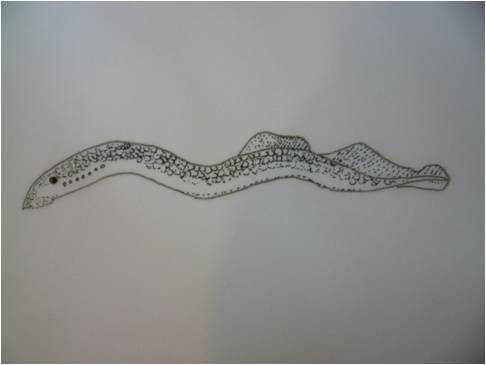
Table 4 : Major subgroups of fish found in the world. [11]
| Class Agnatha | jawless fishes | |||
| Class Placodermi | primitive jawed fishes | |||
| Class Chondrichthyes | living and extinct cartilaginous fishes (internal skeleton made of cartilage) | |||
| Subclass Elasmobranchii | Order Selachii – modern shark eg Squalus sp. | |||
| Order Batoidea – sawfish, skates and rays | ||||
| Subclass Holocephali: ratfish | ||||
| Class Osteichthyes | ||||
| Subclass Acanthodii | ||||
| Subclass Actinopterygii | ||||
| Infraclass Chondrostei | ||||
| Infraclass Holostei | ||||
| Infraclass Teleostei | ||||
| Superorder Leptolepimorpha | ||||
| Superorder Elpomorpha | ||||
| Superorder Clupeomorpha | ||||
| Superorder Osteoglossomorpha | ||||
| Superorder Protacanthoptergii | ||||
| Superorder Ostariophysi | ||||
| Superorder Atherinomorpha | ||||
| Superorder Paracanthopterygii | ||||
| Superorder Acanthopterygii | ||||
| Superorder Sarcopterygii | ||||
| Order Crossopterygii | ||||
| Order Dipnoi | ||||

Fish With Jaw Cartilaginous skeleton
The Chondricthyes have jaws. However, the internal skeleton is made up of cartilage and not bone. Some species of Chondriththyes like sharks and rays are found in Malaysia. Sharks are known to be voracious, predating on other smaller marine animals such as fishes, crustaceans, and shellfishes. [11]
Bony skeleton
The third fish group is the bony fish or Osteichthyes. This group of fish has jaws, and like sharks and rays, swallows their prey. However, their internal skeleton is made of bony materials (calcium phosphate). Most of the fishes we know, from the small fighting ornamental fish like Betta (ikan laga) to the huge Tuna are Osteichthyes. Most fishes found in the local wet market are Osteichthyes. Examples are the ikan kembong, ikan merah (red snapper), ikan sardin (sardines), ikan cencaru, ikan tamban (herring), ikan tongkol (tuna), ikan tenggiri (Indian mackerel) and ikan bilis (anchovy). Freshwater fishes either reared or wild, eaten by Malaysians are also Osteichthyes. Examples are ikan keli (cat fish, Clarias spp.), ikan haruan (snake head fish, Channa spp.), ikan sepat (Trichogaster spp.) and ikan duri (catfish, Hemibagrus spp.)
Water provides for the buoyancy, the lift necessary for fish to remain afloat in association with a gas-filled bladder. To swim, the various fins of the fish assist: pectoral fins found on each side, left and right, the dorsal fin, tail and other fins. These fins also help fish to balance and steer its way through the water. Fig. 14 shows the various fins found on a typical fish. Besides fins, scales cover the body of fishes. They provide a smooth covering for the skin, facilitating under water movement, as well protection for fish against external forces and pathogens/parasites.
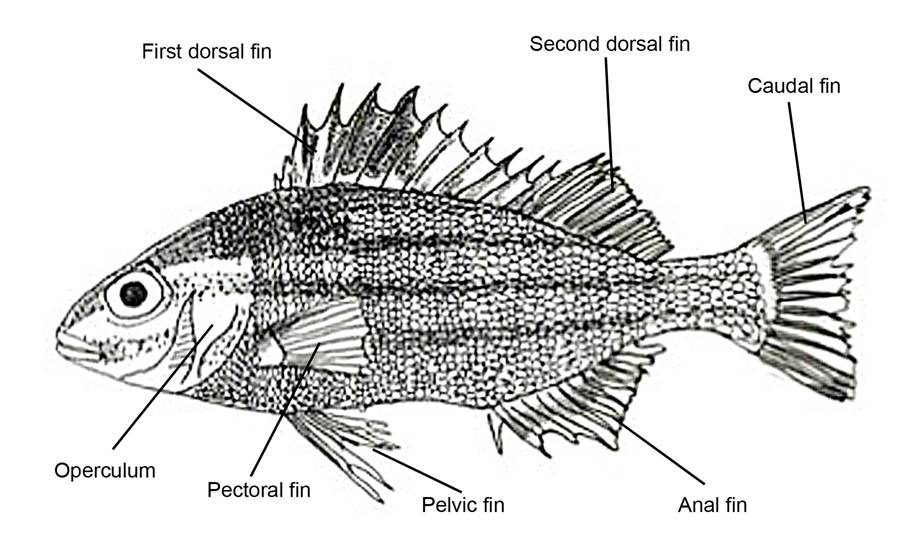
Fig. 14 : A typical fish with fins located on various parts of its body.
Table 5 shows diversity of freshwater fishes gathered from various parts of Malaysia. The number of freshwater species in Malaysia is, in some places like the Crocker Range in Sabah, fairly high. Considering the total number of freshwater fish species is 449, the 41 species found in Crocker Range forms about 9% of Malaysian fauna. Diversity of fishes is much dependent on the quality of water. In peaty water with high acidic content, with a pH of less than 4.0, like the Maliau Basin, the number of fish species is lower being only 3 species. [14,15] Whilst in pristine clean forest river, the number of fish species is higher. Different types of fish which able to survive and breed well require different water quality. Hence, some fishes can be used as indicators of the various river water qualities. As an example, the fish family of Cyprinidae are inhabitants of clean water, thus in dirty river it is almost impossible to see the cyprinids. Examples of cyprinids are the Cyprinus and Hampala.[16,17] Another interesting group of fish is the sucker fish, endemic to Borneo– from the family Gastromyzontidae. As an example is the genus Gastromyzon. This group of fish can only live in cool, running, montane stream with clean water. They are indicators of clean water. They are also endemic to Borneo and found in Sabah and Sarawak but not in Peninsular Malaysia.[18]
Table 5 : Some examples of freshwater fish diversity from several locations in Malaysia.
| No. | Place | No. species (no. families) | Family (no. of species) | Remarks |
| 1 | Maliau Basin, Sabah [14] [15] | 3 (3) | Cyprinidae (1-Puntius sealei)Belontiidae (1-Bettasp.)Bagridae (1-Hemibagrus nemurus) | Acidic water pH <5 |
| 2 | Lower Segama, Sabah [19] | 22 (13) | Cyprinidae (6); Bagridae (4); Ariidae (3);Anabantidae (1); Anguillidae (1); Eleotridae (1)Engraulidae (1); Gobiidae (1); Hemiramphidae (1); Ophicephalidae (1); Siluridae (1); Toxotidae (1) | Lowland river |
| 3 | Crocker Range, Sabah [17] | 41 (11) | Balitoridae/Gastromyzontidae (15)Cypronidae (14); Cobitidae (3); Channidae (2);Anguillidae (1); Bagridae (1); Clariidae (1); Cichlidae (1); Gobiidae (1); Poecilidae (1); Sosiridae (1) | Highland and lowland river |
| 4 | Kinabalu Park, Sabah [20] | 40(9) | Cyprinidae (18); Gastromyzontidae (11)Bagridae (3); Sisoridae (2);Anabantidae (2); Mastacembelidae (1)Anguilidae (1); Cobitidae (1); Cichlidae(1); | Highland and lowland river |
| 5 | Gunung Stong, Kelantan [21] | 15 (8) | Cyprinidae (7); Bagridae (2); Amblycipidae (1); Sisoridae (1); Belonidae (1); Synbranchidae (1); Channidae (1); Mastacembilidae (1) | Highland river |
| 6 | Wang Kelian,Perlis [22] | 17 (8) | Cyprinidae (8); Clariidae (2);Channidae (2)Bagridae (1); Amblycepidae (1);Hemiramphidae (1); Cichclidae (1);Mastacembelidae (1) | Lowland river |
| 7 | Wang Mu, Kedah [23] | 24 (11) | Cyprinidae (12); Channidae (2); Clariidae (2)Balitoridae (1); Amblycephalidae (1);Synbranchidae (1); Siluridae (1); Bagridae (1)Hemiramphidae (1); Mastacembelidae (1);Cichlidae (1) | Lowland river |
| 8 | Endau Rompin, Johor [24] | 43 (15)(Total known 76) | Cyprinidae (17); Balitoridae (6); Bagridae (4); Cobitidae (2); Siluridae (2); Belontiidae (2); Channidae (2); Sisoridae (1); Akysidae(1); Chacidae (1); Clariidae (1); Belonidae (1); Hemiramphidae (1); Syngnathidae (1); Mastacembelidae (1) | Lowland river |
To illustrate some common fishes from the marine and freshwater ecosystem in Malaysia, Fig.15 and Fig.16 are given. Fishes are also traded as ornamentals. Many years ago, goldfish were being kept as pets Today in many homes, flowerhorn fish and arawana are being kept as pets.Much cross breeding (genetic engineering) has been done to produce flowerhorn fish with more gorgeous fins and scales. Sometime these fishes are worth thousands of dollars. They are fed with house or field crickets besides the usual fish pellets. Fig. 17 shows an ornamental fish species– the arowana.
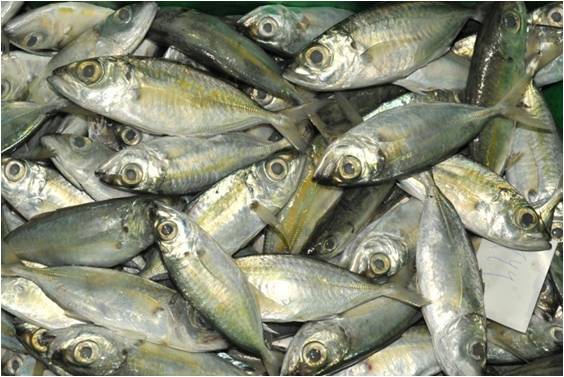
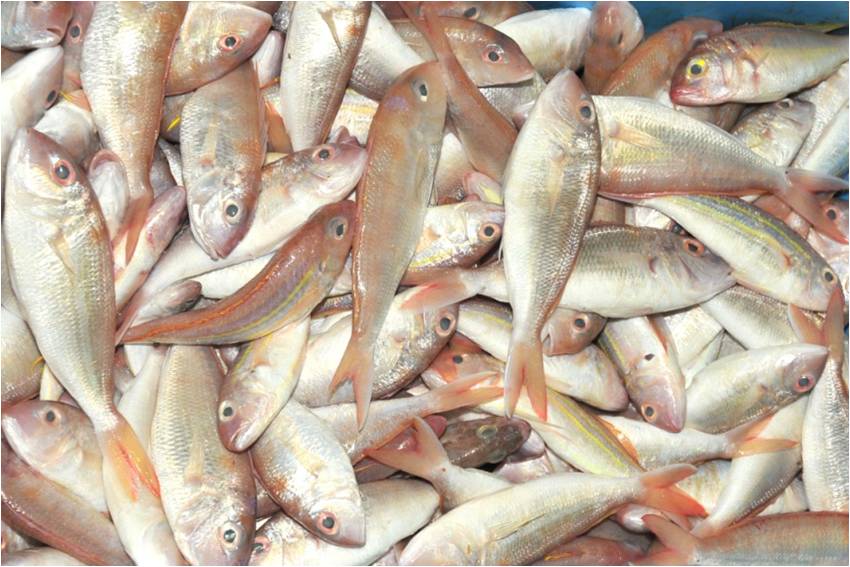
Fig. 15 : Examples of common marine fishes sold in a fish market.
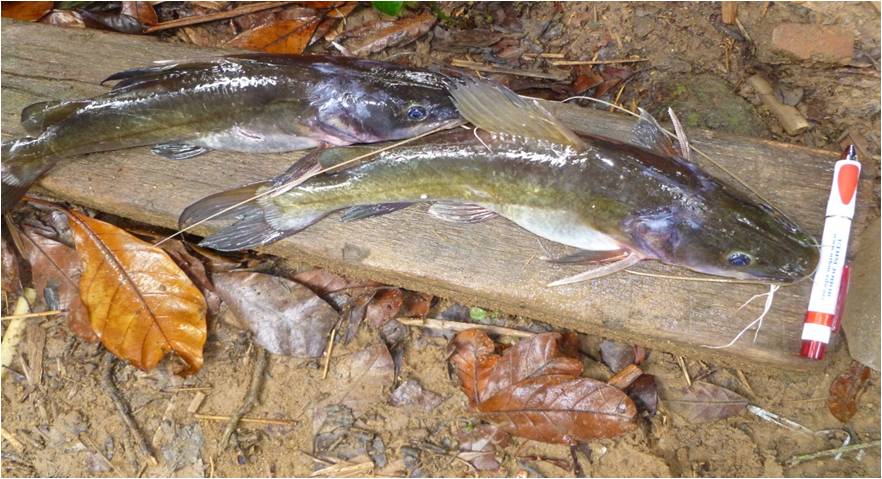
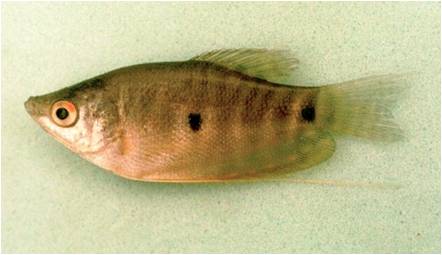
Fig. 16 : Examples of some fresh water fishes eaten by Malaysians.
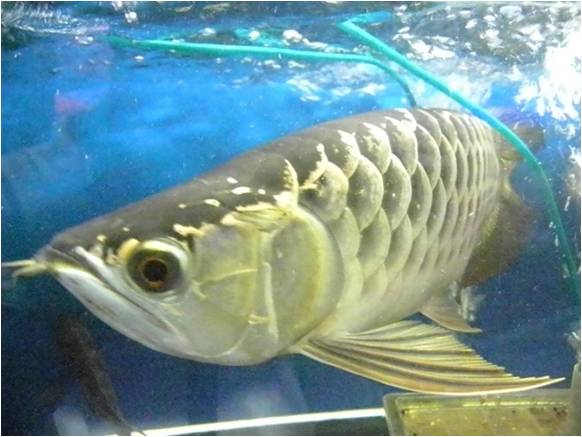
Besides the two extreme conditions– marine and freshwater, is the estuarine rivers. Fishes from the Sarawak estuarine rivers, and one that has always received much attention is the bewitching mudskipper.[25] Mudskippers are fishes that are able to hop on to the drier estuarine mudflats. Along the Sarawak river, the size of mudskipper is substantial and thus, it becomes an attraction. Besides breathing through their gills, mudskipper slosh water round inside their mouth to re-oxygenate it, prolonging the time they can spend out of the water.In Fig. 18, is shown a smaller sized mudskipper from a mangrove ecosystem in Tanjung Piai, Johor, Malaysia (the southernmost tip of mainland Asia).
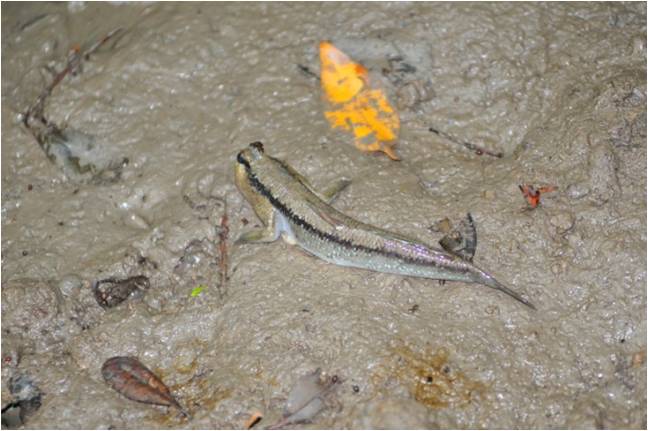
AMPHIBIA
Frogs (Malay name is katak) and toads (Malay name is kodok) are common in Malaysia. Frog’s back legs are fat, muscular and long. This architecture makes the back leg excellent for jumping and hopping. Their arms are short and stout. Fig. 19 shows a diagrammatic representation to illustrate the morphology of a frog body. The hind limbs, being long, lie flat close to the body and the ground. When hopping, the hind limbs stretch out nicely to give a push that enables the frog to jump to forward in a distance. The long hind leg, considered as a propulsive organ in a frog’s leap, has special extra functional joint. [26]
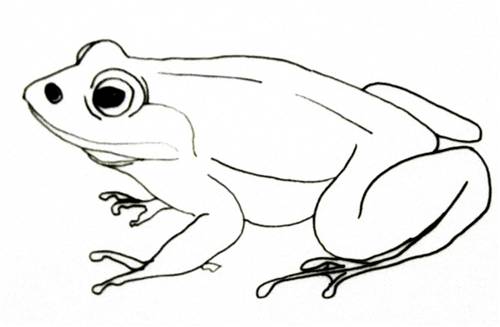
There are 3 orders in the class Amphibia which are: ANURA (frogs and toads), APODA (Caecilian) and SALIENTIA (Salamanders), as listed in Table 6. Whilst in Table 7 is to compare the major differences between the three orders. In Malaysia, it is hard to find salamanders in the natural environment, although, some aquarium shops may selling it, as seen in Fig. 20. Cecilians occur in Malaysia and they look like a short snake (Fig. 21). Cecilia lives in muddy holes, sometimes with their eggs and are not easy to find. In Sabah, however, it was once reported on egg brooding in a Caecilian called Caudacaecilia asplenia. [27]
Table 6 : Classification ofAmphibia. [10]
| Class | AMPHIBIA |
| Order | Anura : Frogs and toads |
| Order | Caudata/Salientia : Salamanders |
| Order | Apoda /Gymnophiona : Cecilia |
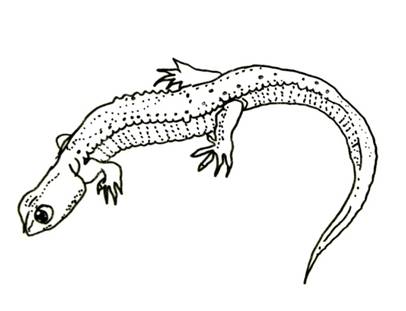 | 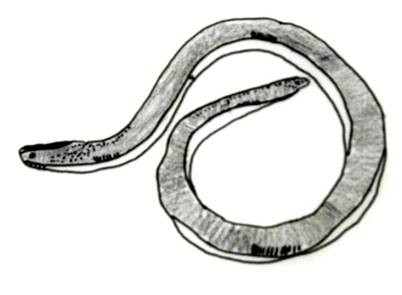 |
|
Fig. 20: Some salamanders are sold in aquarium. | Fig. 21:. Cecilian, snake-like. |
|
Salamanders are normally found in the temperate region. Some people would keep salamanders as pets feeding them with small chunks of meat. However, Cecilians are rare to be kept as pets and are difficult to find. |
Table 7 : Comparison of characteristics between three orders of the class Amphibia.
| CHARACTER | Order ANURA | Order APODA | Order SALIENTIA |
| Example | Frogs/toads | Salamander | Cecilia |
| Habitat | Adults :water bodies Forest floor, canopy | some adults remain in water | Adult : burrows in soft soil Some aquatic whole life |
| Eggs | Laid in water | Laid in water | Most oviparous, Laid in soil/water, some viviparous |
| Head | Large, triangular, flattish | Small, reptile-like | Small, snake/eel-like |
| Body | Short, stout | Longish lizard-like | Snake or eel-like |
| Forearms | Short | Short | None |
| Hindlimb | Long | Short | None |
| Food | Live small organism, like insects | Scavenging | Scavenging |
The best characteristic that separates out amphibian from other animals is their life styles. They are the first group of animals able to live on land. However, they are not thoroughly successful, as part of their life stage, especially the young (tadpoles) must be in water. The life cycle of frogs and toads, salamanders and cecilian, includes an aquatic larval stage called tadpole, i.e. a living and swimming in the water which is predating on other smaller organisms or feeding on algae. Upon reached a certain maturity stage, the tadpole will gradually develop limbs and dispose of its tail to become a frog that can hop on land. The most important physiological change is its breathing system. In the water, tadpoles breathe using gills and after being a frog they will have to use lungs. The structures of the lungs are simple and small and thus, amphibians also need their skin to help them in breathing. Their skin is moist and soft and thus oxygen can be absorbed into the body through the skin. Besides helping in breathing, the skin of amphibians lacks scales. Instead, it has many skin glands (especially the toads) that help in protecting the skin from any infection. It is kept moist with mucus from cutaneous glands and is richly vascularised. It is not good in preventing dehydration and therefore amphibians are generally not active during the day-time but will be heard and seen during the night-time. Fig. 22 illustrates diagrammatically the life cycle of a frog.
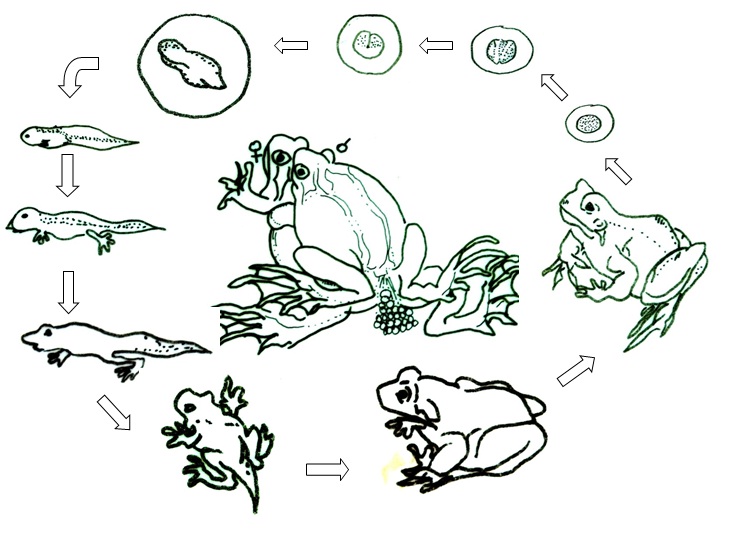
Fig. 22 : Diagrammatic representation of a typical frog/toad life cycle.
There are 158 species of frogs/toads and cecilians found in Malaysia. Table 8 shows results from various surveys in Malaysia. From the surveys, certain locations like the Crocker Range and Kinabalu seems to have a high amphibian representation, as compared to others. This distribution is due to firstly, the location of survey is been an interested place for many herpetologists to do their researches and collections; and secondly, the location is moist and cool suitable for frogs to live. Amphibians need cool, moist areas to live in and as such make good indicators for changes in the environment, from being cool and moist to being exposed and dry.
Table 8. Examples of some amphibian diversity from some locations in Malaysia.
| No. | Place | No.species (No. families | Families (no. species) | Remarks |
| 1 | Maliau Basin, Sabah [28] | 25 (5) | Rhacophoridae (7) Ranidae (6); Bufonidae (5); Microhylidae (4); Pelobatidae (3) | Mostly lowland forest |
| 2 | Crocker Range, Sabah [29] | 68 (5) | Ranidae (24); Rhacophoridae (17); Bufonidae (11); Megophryidae (10); Microhylidae (7) | Montane and lowland forest |
| 3 | Kinabalu Park, Sabah Wong & Philippe [30] | 68 (5) | Rhacophoridae (20); Ranidae (19); Bufonidae (13); Megophryidae (9); Microhylidae (7) | Above 200m to 2000m |
| 4 | Gunung Stong, Kelantan [31] [32] | 29 (5) | Ranidae (14); Bufonidae (7); Megophryidae (3); Microhylidae (3); Rhacophoridae (2) | Areas : Gn. Stong and Pergau River |
| 5 | Wang Kelian,Kedah [33] | 13 (4) | Ranidae (7); Microhylidae (3) Bufonidae (2); Rhacophoridae (1) | |
| 6 | Endau Rompin, Johore [34] | 32 (6) | Ranidae (11); Microhylidae (10); Bufonidae (5); Rhacophoridae (4); Megophyridae (1); ichthyophiidae (1) | Lowland forest of Selai, Endau Rompin |
REPTILIA
The first group of animals to have actually conquered the terrestrial ecosystem successfully is the reptiles. They are successful because of the ability to lay amniotic eggs. Amniotic eggs have sufficient protection provided by shells (to protect against dehydration). And secondly, an amniotic egg contains sufficient egg yolk for the young reptile to develop into an independent individual before it hatches out from the egg. When it hatches out from the egg, the young reptile is strong and able to survive better on land. Thus, reptiles do not have soft jelly-like eggs that need water to further their development and there is also no need for a larval aquatic stage, as shown by amphibians. Fig. 23 is a schematic representation of an amniotic egg. Since there are morphologically distinct groups of reptiles, Malaysians named the reptiles differently. Ular refers to snakes, cicak/biawak/buaya refers to lizards/monitor lizards/crocodiles whilst kura-kura and penyu refer to tortoise and turtles respectively.
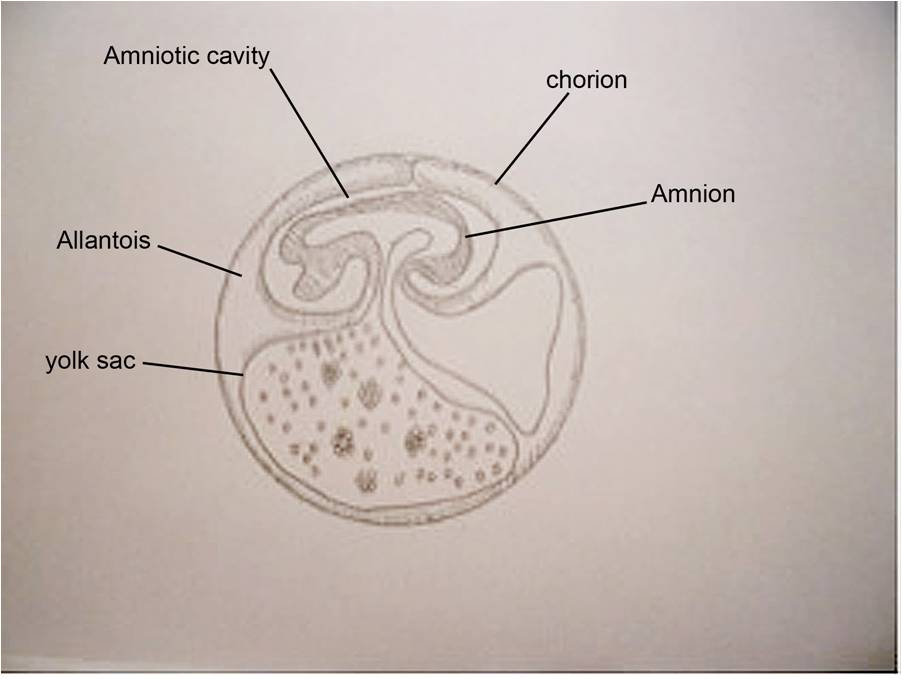
Adaptive changes that happen to reptiles for them to successfully inhabit a drier terrestrial ecosystem are many. The skin of many groups like lizards, skinks, monitors and crocodiles are heavily keratinized. In some soft-bodied lizards, however, their epidermis created epidermal scale as to prevent dehydration. In some groups like crocodiles, the keratinized epidermis forms plates. The body of a snake is covered with scales, which assist it to slither quickly on the ground and climb trees. Since reptiles are now moving on land, keratinized epidermal cells also provide for claws in digits of their limbs. These provide for traction during running. In some reptiles it facilitates climbing, digging, grasping and rending preys. [10]
Physiologically, reptiles have a better breathing system and larger brain than amphibians. However, their body temperature is maintained externally and it fluctuates with environmental temperature. Thus, reptiles will lie in the sun to obtain optimal heat for body or rest in shade to cool off. Modes of feeding are now more varied. Some turtles, snakes, crocodiles and lizards are carnivorous. Turtles feed on jellyfishes, snakes predate on smaller animals, crocodiles live mainly on aquatic organisms like fish and others, and monitor lizards scavenge on almost anything. Lizards though, are more selective in their diet choosing smaller insects and organisms. However, some turtles are omnivorous feeding on marine/freshwater plants as well as animals. Some iguana and tortoises are herbivorous. In terms of their reproductions, some reptiles are oviparous, i.e. laying eggs containing yolk and with a shell, whilst some are ovoviviparous where eggs mature in the body of females and young are given birth.
Since reptiles have morphologically distinct groups, thus their classifications are simple and easy to understand. There are snakes that live in the water (freshwater and marine). Snakes are without limbs and as such they slither using their scales on the underside (ventral) of their body. Snakes maybe poisonous but most are not. They have fangs in the mouth that could produce venom to kill their prey. Examples of poisonous or venomous snakes are vipers, cobras, coral snakes, kraits, sea snakes and sea kraits. [35] Some snakes like the huge python (Python reticulatus) kill their prey by squeezing them tightly. The green oriental vine snake (Ahaetulla prasina) are pretty common, found in gardens and bushes and are quite harmless, although their saliva is mildly toxic. [35] Fig. 24 shows a reticulated python (Python reticulatus) in a zoo. In Malaysia, there is a venom production centre in the state of Perak but anti-venom serum commonly available locally is imported from Australia, India, and Thailand. [35] Diversity of snakes in Borneo has been well documented [36].
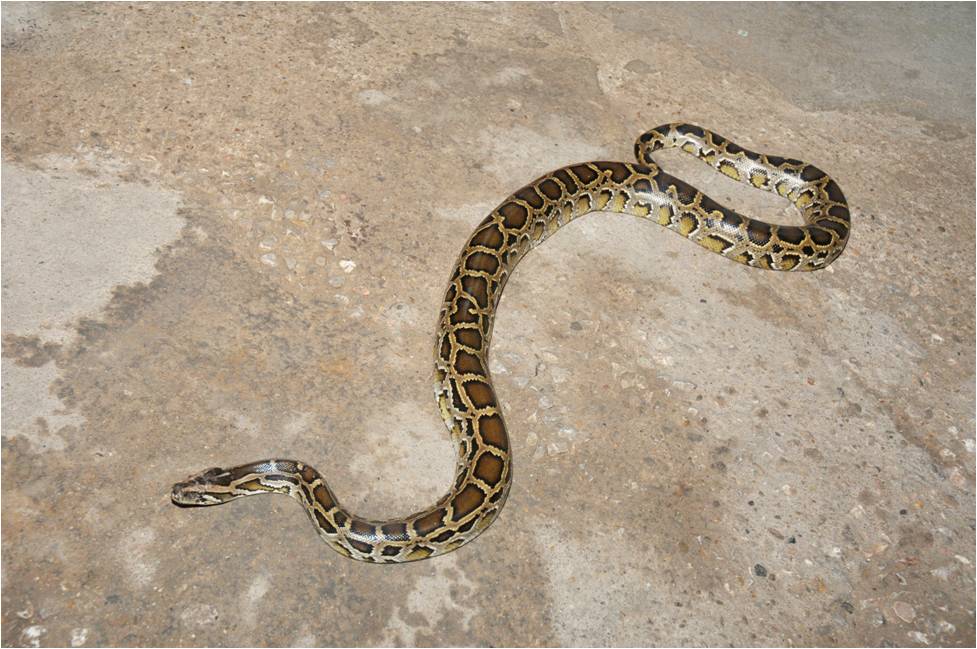
The second group of reptiles is the lizards, skinks, monitor, gavials, alligator, and crocodiles. They have fairly short and stout limbs found attached closely to their body. This group of reptile walks slowly clawing the surface as they move along the ground or on trees. House lizards (geckos) though, have a huge number of extremely fine thread-like scales that adhere to surfaces like a velcro, even on smooth surfaces like ceiling and window panes. There are various kinds of lizards that can be found near human dwellings, the common being the house-hold lizards, the soft-bodied Hemidactylus sp. Fig. 25 shows a house lizard. The water monitor lizard that Malaysians are used to is the species Varanus salvator. They are excellent scavengers feeding on almost anything ranging from living preys like eggs and chicken, to solid rubbish. Fig. 26 shows a monitor lizard Varanus salvator looking for food.
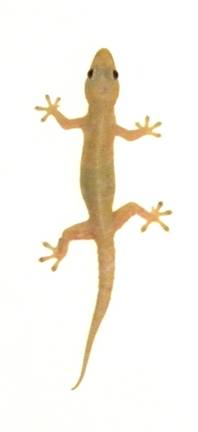
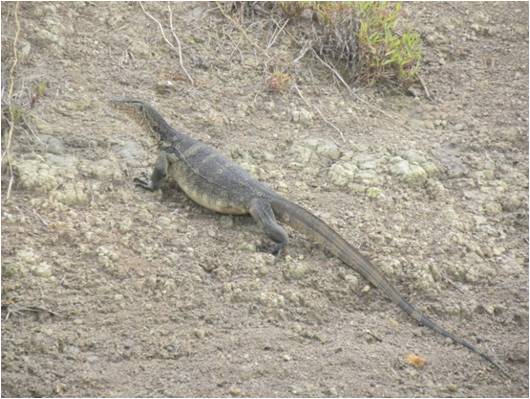
In Malaysia, there is the estuarine crocodiles (Crocodylus porosus) which belong to the order Crocodilia. This species is fairly common in estuarine of rivers in Sabah and Sarawak. When one wants to see a crocodile during the night time, bring along a powerful torchlight. Either travelling by boat or walking, shine the torchlight along the edge of the river, at the surface of the water. If there is a crocodile, the light from the torch will shine and the eyes of crocodiles will normally shine back, being glowing red in colour. This is the reason why Malaysian named crocodile as “si mata merah” (the red eyed). There are crocodile farms in Sabah that produce crocodile skin for the fashion accessory and shoe industry. Fig. 27 shows a crocodile basking in the sun. Another species of Crocodilia found in Malaysia is the false gharial, i.e. Tomistoma schlegeli. which has narrow snout and eats fish.
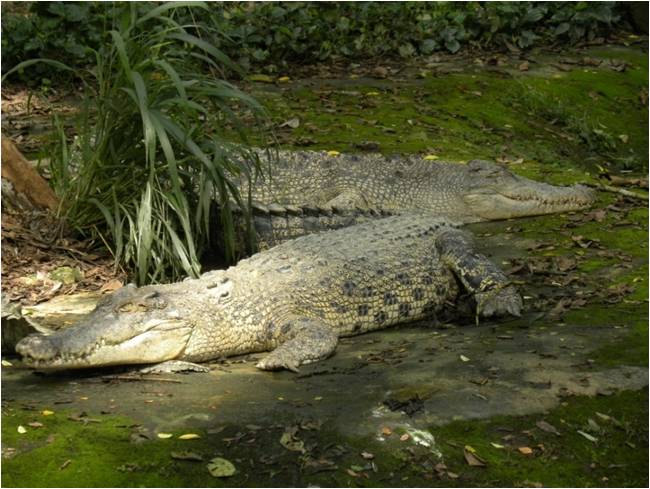
The turtles and tortoises made up the third group of reptile. Malaysia refers to tortoises (kura-kura) as those that lives on land and turtles (penyu) as those that inhabit the marine ecosystem. Long time ago, Malaysians, especially in the states of Sabah, Sarawak, Terengganu, and Kelantan, they love to eat turtle eggs. Those days one can buy turtle eggs in the wet market, easily. However, as turtles are now becoming endangered and protected by law, it is not common to see people selling or buying turtle eggs. The main problems with conservation of turtles are that, firstly, eggs are consumed (some people still relish turtle eggs) in large number and secondly, egg laying sites of turtles have become tourists sites and attractions. People come to watch turtle laying eggs. These factors disturb the turtles and cause them feel not safe to lay egg in these sites.
Tortoises have a hard shell consisting of two plates, the upper carapace and lower plastron. The head could be retracted into its shell when they are disturbed. Fig. 28 shows a tortoise. A study done by on the tortoise Manouria emys emys at Danum Valley, Sabah shows the animal to be fully herbivorous feeding on several groups of plants, preferring the yam group, Alocasia. The toxic properties of calcium oxalate contained in Alocasia apparently do not have the same irritation effect and swelling of tissues, on tortoises as in mammals. It was also found that humidity around 90% and shade seemed to be essential for tortoise habitats. [37]
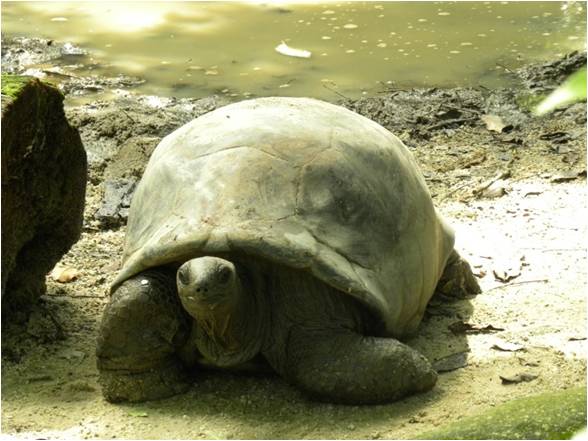
Fig. 28 : This species of tortoise can be found kept in a zoo.
Table 9 shows the classification of reptiles based on evolution. The main factor is the existence of temporal fossae (one or more paired gaps in the cranium- Fig. 29). At this point, the turtles have none and thus they belong to the group Anapsida. Whilst other reptiles have two pairs (group of Lepidosauria). Those with one pair of temporal fossae are extinct, i.e. Eurypsida. Among the Lepidosauria, lizards and snakes belong to the same order of Squamata, whereas crocodiles belong to the third group of Archosauria with order of Crocodilia.
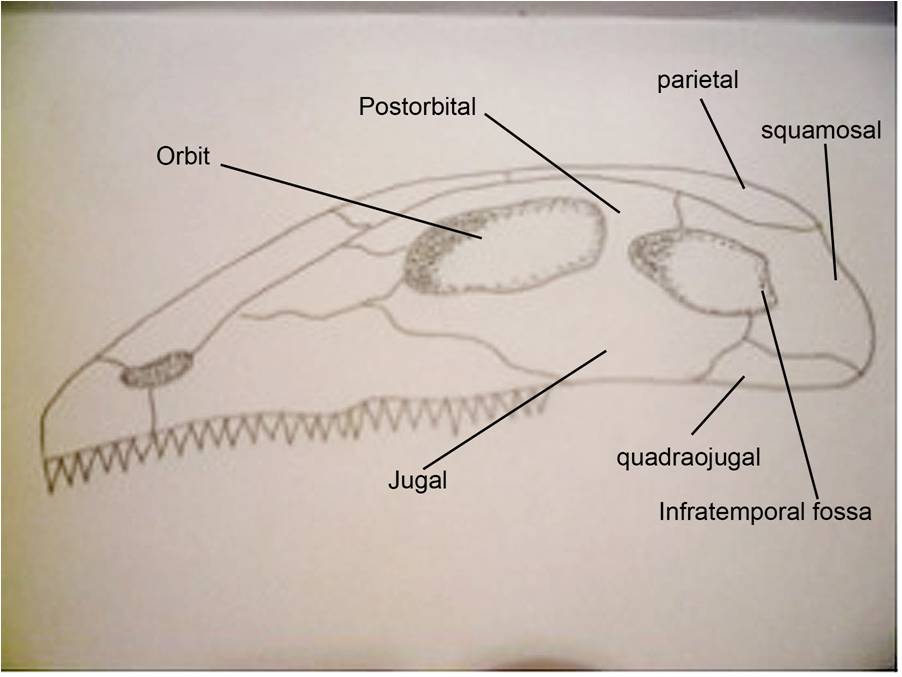
Fig. 29 : These gaps found in the cranium of reptiles indicate its ancestry, and are called temporal fossae.
Table 9 : Classification of reptiles. [10]
| Class | REPTILIA |
| Subclass | Anapsida : temporal fossae lacking (3 orders extinct 1 extant) |
| Order | Testudinata/Chelonia : turtles |
| Suborder | Pleurodira : side neck turtle – neck bend sideways to draw head partly into shell |
| Suborder | Cryptodira : draw head straight into shell |
| Subclass | Synapsida (2 orders – extinct) |
| Subclass | Euryapsida : 1 pair of temporal fossae, above squamosal bone (4 extinct orders) |
| Subclass | Lepidosauria : primitive diapsids (2 pairs of temporal fossae); scaly skins |
| Order | Rhyncocephalia : Tuatara (New Zealand only living group) |
| Order | Squamata : most successful modern reptiles; molt periodically |
| Suborder | Lacertilia / Sauria : 26-30 families of lizards |
| Suborder | Ophidia / Serpentes : 10 families of snakes |
| Suborder | Amphibaenia / Annulata : 1 family of legless worm lizards |
| Subclass | Archosauria (3 extinct order 1 extant order); advanced diapside (2 pairs of temporal fossae) |
| Order | Crocodilia : largest living reptiles, quadrupedal, short legged, amphibious, predatory |
There are 268 species of reptiles found in Malaysia. [1] Table 10 shows diversity of reptiles reported from two surveys in Malaysia. Comparatively there are few studies and collection of reptiles in Malaysia, unlike for other vertebrates. It has been found that Malaysia fortunately to have 154 species of snakes [36] and 289 species of reptiles. [35]
Table 10. Survey on reptiles from Gn. Stong, Kelantan and Wang Kelian, Perlis, Malaysia.
| No. | Place | No. of species | Families | Remarks |
| 1 | Gunung Stong, Kelantan [38] [32] | 58 | Tortoise (1), lizards (14), snakes (43) | Pergau River, Kelantan |
| 2 | Wang Kelian, Kedah [39] | 46 | Snake:26; lizards: 12; turtles : 8 | Mata Ayer & Bukit Wang Mu Forest Reserve |
BIRDS
Interestingly, in Malaysia the term burung is used to refer to all birds except the domesticated ones including chicken (ayam), ducks (itik) and goose (angsa). In total, 736 species of birds have been recorded in Malaysia. The most obvious distinguishing character from other animals is that birds have feathers, which generally enable them to fly. Feathers cover the body and are regularly and elaborately arranged on the wing (Fig. 30). When the wings are stretched, the feathers are spread forming a large surface area which is sufficient to produce an upward thrust when birds flap their wings. Another obvious characteristics is that birds are bipedal, a rare phenomenon among vertebrates. Even the highly evolved mammals such as chimpanzee and orang-utan can usually walk bipedally only for short distances.
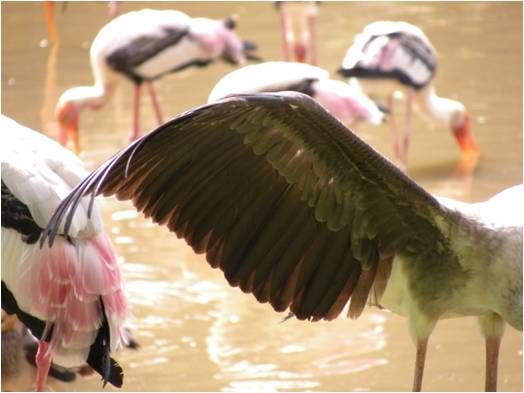
Fig. 30 : The wing of a bird that enables it to fly.
The feathers are of different kinds. The contour feathers follow the shape of the body and overlaps like shingles on the roof, each overlapping the one behind. Contour feathers have a single shaft or quill, supporting the vanes or webs on both sides: these are made of closely spaced barbs that interlock as system of tiny hooks. The contour feathers are usually soft, and are efficient at retaining heat. Flight feathers, on the rear edge of the wings, and on the tail, are usually larger, stiffer and stronger, and asymmetrical with one vane narrower than the other, their aerodynamic shape being important in flight. The third kind of feather, very soft and hair-like with a small tuft of barbs at the tip is called a filoplume. They are normally interspersed amongst the contour feathers and may have a sensory function. The fourth kind is the bristles, with a reduced, thickened and hardened shaft and with barbs only at the base or lacking. Bristles may cover a bird’s nostril to prevent dust from getting into the nasal cavity, or may even serve as eyelashes to protect the eyes, or be placed fringing the mouths of birds that catches insects in midair, like swift. Fig. 31 is a diagramatic presentation of the four kinds of feathers. Basically, the functions of feathers are (a) flight, including streamlining (b) insulation, (c) water proofing (d) visual communication, (e) acoustic communication (for example, tail rattling), and (f) concealment by cryptic colouration.
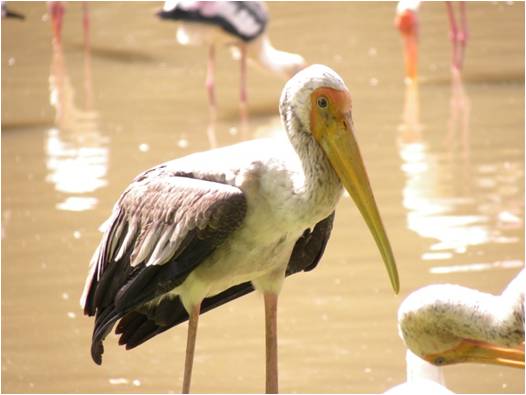
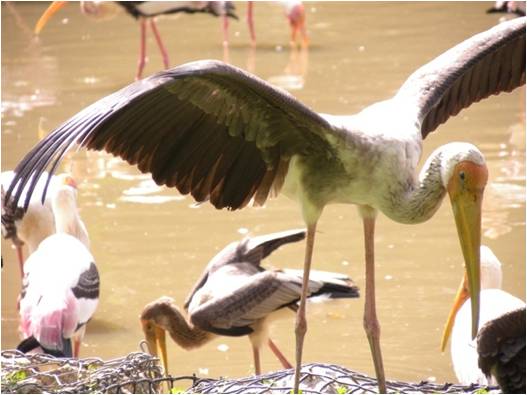
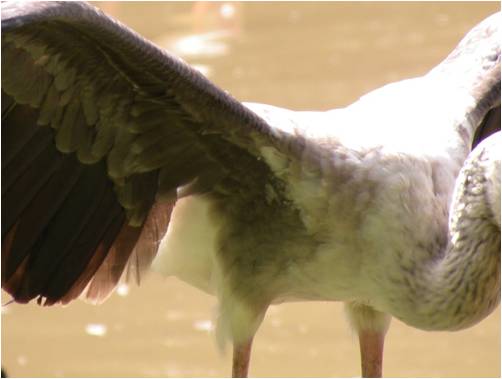
As flying is basic to birds, there are many adaptations that occur in birds to facilitate flying. The bones that make up the skeleton of birds are specialized with many bones being thin, hollow with internal supportive trusses. [10] The trunk vertebrae are fused together, to minimize distortion by pull of muscles during flight and the ribs are linked together by uncinate processes. Some cervical vertebrae (number 8 to 24) have saddle shaped centra allowing for free neck mobility to compensate for the rigidity of the trunk. The sacrum is long, articulating with an elongated ilium for a strong sacroiliac union assisting bipedal locomotion. As for the tail portion, the caudal skeleton, only four are free vertebrae in addition to several fused into what is called a pygostyle that furnishes attachment for muscles that control the tail (except in flightless ratites, example the ostrich). The sternum projects into a huge keel to which flight muscles are anchored and the coracoids of the pectoral girdle are braced against the sternum ventrally, whilst the clavicles are fused medially by way of an inter clavicle element to form the v-shaped furcula (wish bone). In the head, jawbones are narrow and light and teeth do not form even though tooth-producing genes are still present. In perching birds they have mechanism to curl and lock the toes in flexion. Birds have good eye sight but poor senses of taste and olfaction. [10]
Generally, there are two kinds of birds: those that fly and those that cannot fly. Big birds such as emu, ostriches and kiwi are obvious examples of birds that do not able to fly. Perhaps because they are not able to fly they become big and bulky, or perhaps because of their big size, they are not able to fly. Although chicken may seem unable to fly, they still belong to those that can fly. In danger chicken can fly. Table 11 shows classification of birds that are able to fly, and those flightless birds called ratites. A flightless bird kept in Malaysia is the ostrich (Fig. 32).
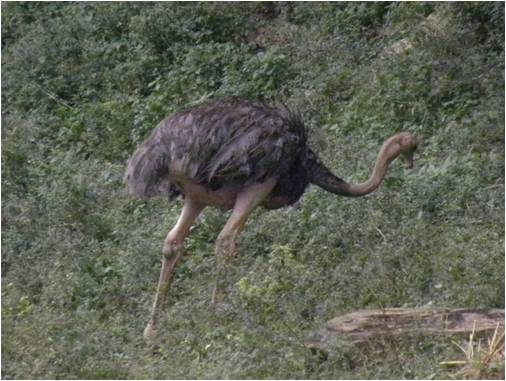
Fig. 32 : A flightless bird kept in Malaysia is the ostrich.
There are 736 species of birds in Malaysia and 11 are endemics. However, there are some bird species that migrate during certain seasons from the northern hemisphere to rest and find food in Malaysia. One of the more important migratory bird path-ways is the East Asian Australian Flyway. Birds, from as far as Taimyr Peninsula in Russia and Alaska, will fly to Australia and New Zealand. Along the way the birds pass by countries like China, Japan Korea, the South East Asian countries, including Malaysia. Altogether, they will fly across 22 countries. It has been estimated that about 5 million birds take this path-way, involving 55 species.
Table 11. Classification of birds in the world. [10]
| Class | AVES |
| Subclass | Archaeornithes : ancient birds : Archaeopteryx & Protoavis |
| Subclass | Neornithes |
| Superorder | Odonthognathae : toothed jaws – cretaceous birds with teeth, eg flightless, swimming Hesperornis and ternlike Ichthyornis. |
| Superorder | Neognathae : toothless jaws |
A: Ratites –with flightless unkeeled sternum
Tinamiformes : Tinamous running birds (Central & South America), keeled sternum but weak wings.
Rheiformes : South America rheas, large 3-toed, flightless with uncarinate (keelless) sternum. Well
developed wings used in courtship
Struthioniformis : African ostriches : 2-toed, uncarinate sternum, plumed wings deployed in courtship
Casuariiformes : Emus, cassowaries (Australia/New Guinea) uncarinate sternum, wing reduced
Dinorthiformes : Kiwis & extinct moas of new Zealand, unkeeled sternum, wings degenerate
B: Flying birds – with keeled sternum, wings well developed flying in air and/or water
*Podicipediformes : Grebes; aquatic, diving after small animals and plant materials
Sphenisciformes : Penguins; marine, gregarious, flipper-like wings fly through water, south hemisphere
*Procellariiformes : Tube-nosed ocean birds; albatrosses & pestrel
*Pelecaniformes : Pelicans, cormorants, boobies, frigate birds; web joins all toes
*Anseriformes : Ducks & geese 3-toed webbed
*Ciconiiformes : Storks, herons & ibises; foot and toes usually long often used in wading
*Falconiformes : Hawks, falcons, eagles; hook billed, diurnal predators that grab preys using talon
*Galliformes : Turkeys, pheasant, quail, grouse, chicken, megapod; ground dwelling seed eaters
*Gruiformes : Long legged cranes, short legged marsh dwelling rails, lobe toed aquatic coots
*Charadriiformes : Shorebirds; sandpipers, stilt, oyster catchers, plovers, gulls, terns, murres, puffin,
Gaviiformes : Loons; aquatic divers, fish eating
*Columbiformes : Pigeons; young feed on pigeon milk from crop
*Psittaciformes : Parrots; bill hooked mostly frugivorous, foot with two toes forward and two rearward,
*Cuculiformes : Cuckoos, roadrunner
*Strigiformes : Owls; mostly nocturnal predators
*Caprimulgiformes : Poorwills, nighthawks; catch nocturnal insects in midair with bristle-fringed mouths
*Apodiformes : Swifts & hummingbirds: unable to walk because of very short legs and tiny feet
Coliiformes : African mousebirds
*Trogoniformes : Trogons, quetzal; tropical
*Coraciiformes : Kingfishers, hornbills, marmots, hoopoes, bee eaters, rollers
*Piciformes : Woodpecker, honey guides, toucan
*Passeriformes : Small terrestrial songbirds/perching birds – flycatchers, larks, swallows, shrikes, wrens, thrushes, mockingbird and thrashers, crows, jays, magpies, tits, starlings, mynahs, orioles, sparrow, finches, warblers
(*Those marked with asterisks are recorded from Malaysia)
In Table 12 below are some data on diversity of birds sampled in several locations in Malaysia. Unlike reptiles, there are more reports on bird diversity. This indicates the higher interest among Malaysian researchers to study in birds. In fact, in a Non-Governmental Organization established in Malaysia, i.e. Malaysian Nature Society (MNS) which organize a special birders club that regularly go birding.
Table 12: Examples of bird’s diversity from several locations in Malaysia.
| No. | Place | No. species (No. families) | Three most common families (no. species) | Remarks |
| 1 | Maliau Basin, Sabah [40] | 272(50) | Timaliidae (29) Muscicapidae (25 species) Pycnonotidae (20 species) | Reports from several expeditions |
| 2 | Lower Kinabatangan, Sabah [41] | 198 (WWF 1992) | NA | 8 species of hornbills |
| 3 | Kinabalu Park, Sabah [42] | 306 (40) | Timaliidae (30) Muscicapidae (28) Cuculidae (21) | Montane forest |
| 4 | *Gunung Stong, Kelantan [43] | 57 (22) | Timaliidae (8) Pycnonotidae (7) Nectariniidae (6) | Lowland forest |
| 5 | *Wang Kelian, Perlis [44] | 27 (15) | Muscicapidae (3) Nectariniidae (3) Pycnonotidae (3) Timaliidae (3) | Abundant families: Laniidae and Nectariniidae |
| 6 | *Wang Mu, Kedah [45] [46] | 24 (12) 114 (Noramly, G. & Kumar, K. 2002) | Pycnonotidae (4) Timaliidae (4) Alcedinidae (3) Dicruridae (3) | From two sites: Taman Negeri Wang Burma and Taman Negeri Wang Mu Another list by Noramly, G. & Kumar, K. 2002 |
| 7 | *Endau Rompin, Johor [47] | 62 (16) | Timallidae (16) Pycnonotidae (11) Muscicapidae (7) | Abundant families: Timallidae, Pycnonotidae, Muscicapidae |
MAMMALS
Most Malaysians are fond of mammals. Dogs, cats, hamsters, and mouse are normal pets for a Malaysian. Generally, mammal is termed as mamalia in Malay. There are 268 species recorded for Malaysia, of which 27 are endemics.
Mammals are so-called from the fact that its most important characteristic is the occurrence of the mammary gland, obvious among the adult females. These glands produce milk which they used to feed their babies; unlike young of birds and reptiles that develop within eggs and the food is supplied by the rich egg yolk. Babies of mammals require longest period of being taken care of by their parents when compared to young of other animal groups.
Morphologically, mammals possess hairs. Some have sparse hair like elephants and Sumatran rhino but others have thick coat of hair like the bears, dogs, and cats. Mammals also possess well developed facial muscle and as such facial expression is also well developed. In Fig. 33 shows how demure these baby orangutan are. Mammals also have a larger brain and brain surface. Another obvious characteristic is the possession of an outer ear pinna that enhances their hearing sensation.
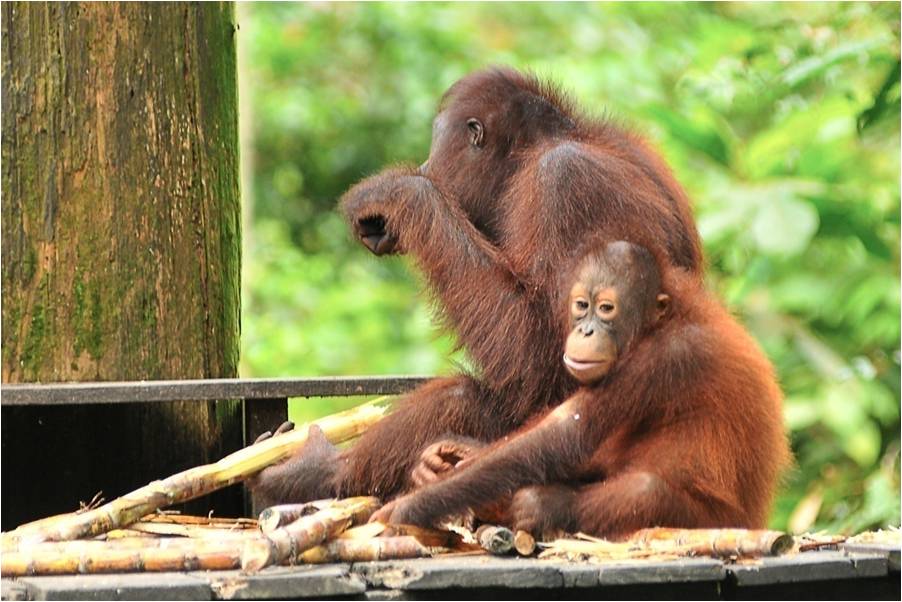
Fig. 33 : The baby orang-utan shows facial expression like a human baby.
Some internal advancements in mammals are also being described.[10] Internally, mammals possess advanced skeletal system, advanced dental system, lungs with much more internal surface, advanced circulatory system with four complete chambers in the heart, superior thermoregulation, advanced excretory system and during life history with two kidneys, advanced male and female reproductive systems and presence of chorioallantoic placenta linking the fetus to mother resulting in larger and more fully developed young which are born (no egg laying). These characteristics make mammals more adaptive and as such able to survive better in all possible habitats. Thus, mammals can live successfully in all habitats of the terrestrial ecosystem, from the high mountain to the beaches. Some could even fly or glide like the bats or the Malayan flying fox and some species live in the sea like the whale and dugong.
Zoologists believe that mammals evolved from reptiles, and as such there is an example of a mammal that still lays eggs–the platypuses of Australia. These monotremes (Prototheria) are the only surviving oviparous mammals and they lay small eggs with a soft shell, about 1.3 x 2.0cm. Another interesting group is the Marsupialia that have a pouch (folded skin from abdomen) and rudimentary placenta or no placenta. As such their fetuses rely on mostly their own egg yolk and are born at a very early stage of development. Also, the nipples of their mammary glands are found in the abdominal pouch. Table 13 outlines the classification for mammals of the world.
Table 13.Mammals orders of the world and Malaysia (bold and underlined). [10]
| Class |
MAMMALIA |
|
| Subclas |
Protheria |
|
| Order |
Monotremata |
|
| Subclass |
Theria |
|
| Infraclass |
Metatheria |
|
| Order |
Marsupialia |
|
| Infraclass |
Eutheria |
|
| Order |
Insectivora: moon rats and shrews, moles, hedgehogs |
|
| Order |
Scadentia: tree shrew |
|
| Order |
Dermoptera: arboreal gliders : 2 species of colugos (SEA) – Cynoephalus variegatus only speciesfound in Malaysia |
|
| Order |
Chiroptera : largest species diversity of eutherian about 92 spp |
|
| Suborder Megachiroptera |
large fruit eating bats |
|
| Suborder Microchiroptera |
small, mostly insects eaters, orienting by echolocation |
|
| Order |
Primates : mostly arboreal, eyes placed for depth perceptions, with hand and feet that can grasp, generally fingers with nail. Loris, tarsiers – nocturnal; monkeys, apes – diurnal |
|
| Order |
Edentata : teeth reduced : ants eaters, sloths, armadillos |
|
| Order |
Pholidota : covered with keratinous scales : pangolins (manis-manis – tenggiling) |
|
| Order |
Lagomorpha : top incisors 2, behind 2 : hares, rabbits* (exists in Malaysia, imported), pikas |
|
| Order |
Rodentia : gnawing incisors 2 above, 2 below : mice, rats, squirrels, beavers, porcupine etc |
|
| Order |
Cetacea : tail with horizontal fluke, hind limb missing, front limb flipper-like; whales and dolphins |
|
| Order |
Carnivora; teeth adapted for carnivorous diet |
|
| Suborder Fissipedia |
terrestrial, with paws : dogs, bear, civets, cats |
|
| Suborder Pinnipedia |
marine, with flippers : seals, walruses (sometimes given as Order Pinnipedia) |
|
| Order |
Tubulidentata ; African aardvark |
|
| Order |
Proboscidea: elongate trunk, tusk : elephants |
|
| Order |
Hyracoidea ; tailless, hooflike toenails : Afro asian hyraxes |
|
| Order |
Sirenia : tail with horizontal fluke, hind limb missing, front limb flipper-like, Herbivorous manatees, dugongs |
|
| Order |
Perissodactyla : odd-toed hoofed animals : horses, tapirs, rhinoceros |
|
| Order |
Artiodactyla: even-toed hoofed mammals : pigs, camels, deer, giraffes, cattle, goats, sheep |
|
(all bolded and underlined orders are found in Malaysia). [10] [48]
In this section, a brief description will be given for several distinct groups of mammals found in Malaysia. The bats form the largest group of mammals. Of the 268 species, 105 are bats. Bats fly and their front limb have elongated skeletal bones supporting a thin membrane of skin. This provides the sufficient surface area for it to flap and fly. Bats are nocturnal creatures active during the night. As vision of insectivorous bats is poor, bats use their hearing to facilitate in their movement and finding direction. Bats produce sounds that are reflected back. These reflected sound waves guide them in finding direction. This ability is called echolation. Some bats eat fruits and are termed frugivorous, and some eat insects and are termed insectivorous. For Malaysia, those that eat fruits are called keluang and others are called kelawar. Fig. 34 shows a typical frugivorous bat with the wing outstretched.
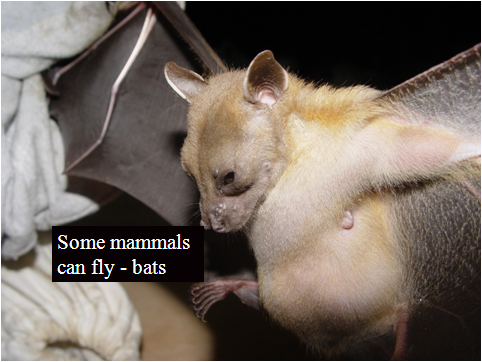
Fig. 34 : The wingspan is wide and provides the thrust needed to fly for bats.
Primates are mammals that have much in common with human beings, especially the orangutan (Pongo pygmaeus). Fig 35 illustrates some of the common features of such a mammal. There are about 14 species of primate in Malaysia. Some are endemics like the proboscis monkeys (Nasalis larvatus) that only found on the island of Borneo (Sabah and Sarawak), but not Peninsular Malaysia. The long-tailed macaques (Macaca fascicularis) are so common and abundant. Short-tailed macaques (Macaca nemestrina) have in the past been used by local people to climb coconut trees and pick the nuts (Fig. 36). They have to be trained first though. In the forest, some species of primate are not easy to be seen but could be heard such as the Hylobates.
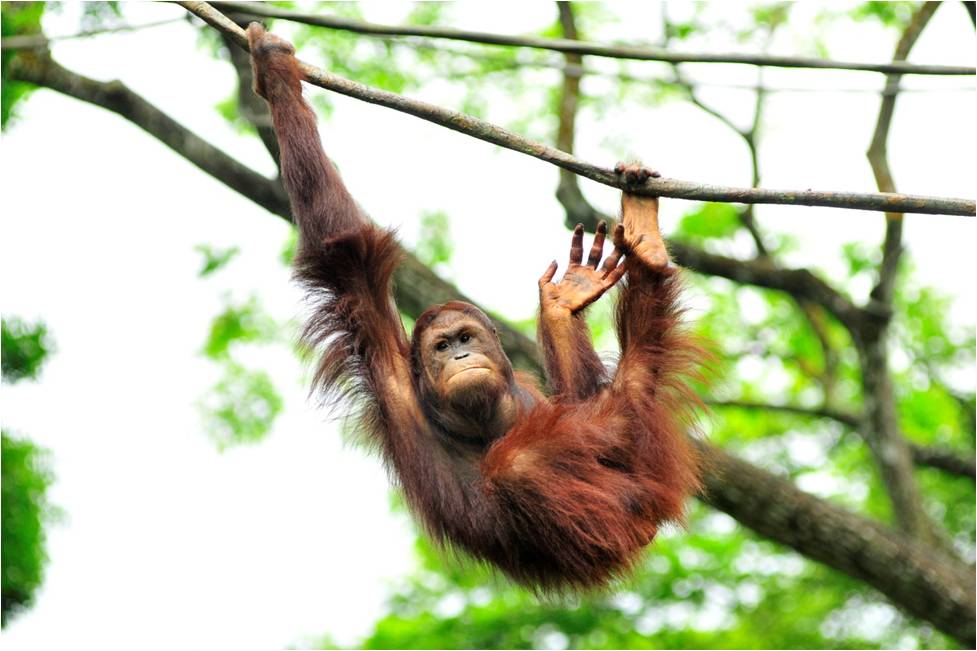
Fig. 35 : The orang-utan have some features similar to man– binocular vision, grasping digits on both the fore and hind limbs, protruding forehead and the dental system.
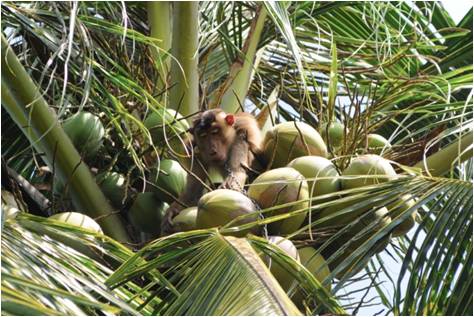
Fig. 36 : The short tailed macaque Macaca nemestrina climbing coconut tree.
Rodentia are the squirrels, beavers, porcupine, mice and rats. The front teeth are used for cutting and gnawing food. They are common, especially rats that love areas with poor home garbage management, and when rubbish is being dumped unscrupulously. Rat infestation is one of the main problems in housing areas and garbage dumping grounds. Rats are also the main pest in oil palm plantations. They destroy the palm nuts by gnawing into them and eating the kernels. The common house rat is called Rattus rattus (shown in Fig. 37). Squirrels and porcupines which belong to Rodentia are also present in Malaysia. However, unlike rats, they are easier to find in the rural areas as there are still many trees left for them to live on.
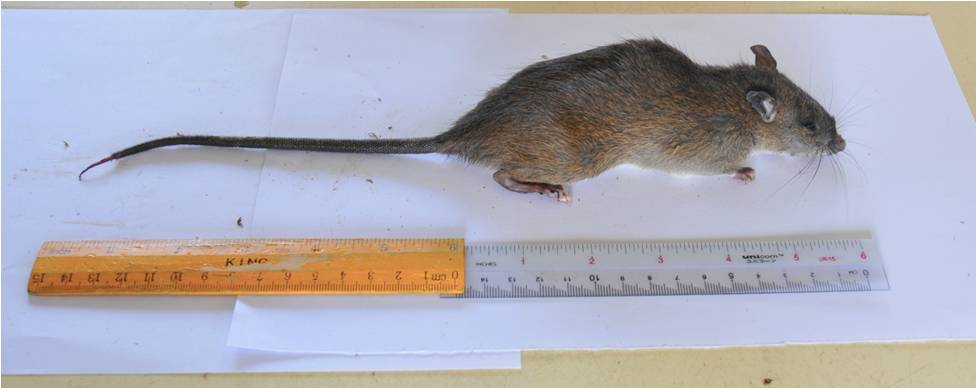
Fig. 37 : This how Rattus rattus the common house rat in Malaysia looks like.
Carnivora are meat eating mammals. Tigers can be found in Malaysia, for example in Endau Rompin National Parks. Tigers are not found in Borneo. Instead the tertiary consumer role in Borneo is played by medium sized wild cats such as Neofelis nebulosa. [48] Fig.38 shows a tiger with its glamorous stripes. Bears and civets are also Carnivora. In Malaysia, there is only one species of bear, the Malayan bear (Helarctos malayanus) and in term of size, this species is the smallest bear.
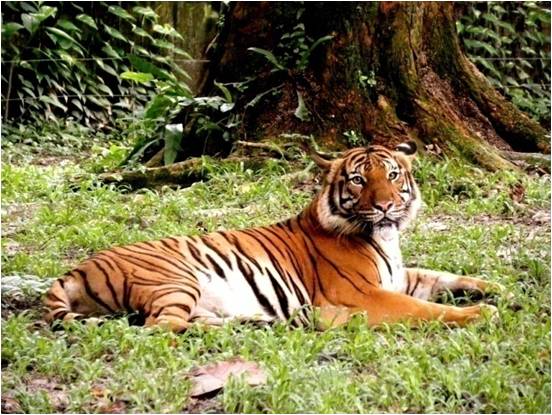
Fig. 38 : Tiger is a carnivore and it is still found in Peninsular Malaysia although not in large number.
Elephant is the only member of Proboscidea found in Malaysia. In Sabah, however, the origin of elephant is much debated. In terms of size, elephants in Sabah are the smallest and thus designated as a subspecies: Elephas maximus borneensis. [49] Whilst in Peninsular Malaysia, the elephants are larger. Fig. 39 shows an elephant reared in a zoo.
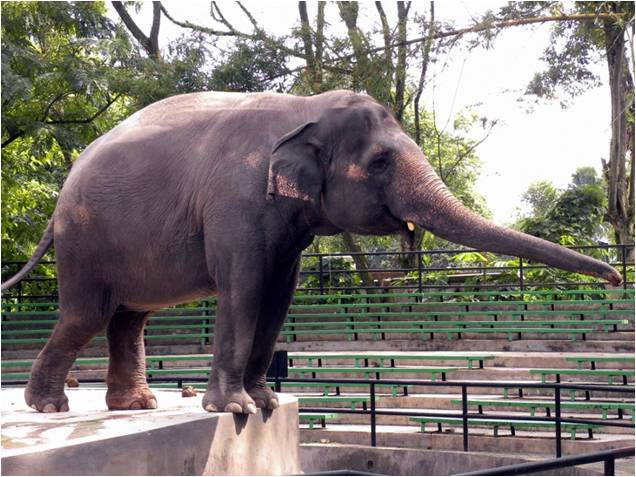
Fig. 39 : Elephants is an attraction for people in Malaysia.
Dugong was once associated with mermaids. On closer look, it does not resemble human. This Sirenian lives at the bottom of the sea, grazing on sea grasses. Occasionally they appear above water, and sometimes caught in fishermen’s net or hurt by boat engine and propellers.
Remaining of fauna can be found in Malaysia are representatives of the ungulates. There are many ungulates in Malaysia: domestic cattle, sheep, cows, goat, water buffaloes, native gaur (seladang), mousedeer, deer and pigs.
To illustrate the diversity of mammals that has been studied and obtained during expeditions, Table 14 is given. It is clear that some mammals are well studied and some are not. For examples, small non flying mammals are always collected during field studies but there has been very little study on ant eaters such as Manis javanicus and porcupines Hystrix hystrix.
Table 14: Examples of mammal diversity from various parts of Malaysia.
| No | Place | No. of species | Major groups( no.species) | Remarks |
| 1. | Maliau Basin, Sabah[50] | 89 | Rodents(30);Carnivoers(18);Bats(14) Primates(10); Cloven Hoofed Ungulates(9) Insectivores(7); Pholidota(1) | |
| 2. | Kinabalu Park, Sabah [51] | 113 | Rodentia(46);Chiroptera(21);Primate(8); Treeshrews(6);Flying foxes/lemurs(2); Porcupine; 2 badger and civet | |
| 3. | *Gunung Stong, Kelantan | 27 | Chiroptera(21);Rodents(5); Squirrels(1) | |
| 4. | Wang Kelian, Perlis[53] | 54 | Rodentia(18);Chiroptera(12);Carnivora(6); Primate(6); Artiodactyla(5); Insectivora(2); Scandentia(2);Dermopetra(1); Pholidota (1); Perrisodactyla(1) | |
| 5. | Wang Mu, Kedah [54] | 18 | Chiroptera(8), Rodentia(8);Scandentia(1); Insectivora(1); | |
| 6. | *Endau Rompin, Johor[55] | 8 | Rodentia(8) | 8 Nematoda, 2 Cestoda families of parasites obtained from rodents, Lowland forest |
| Ulu Endau, Johor[56] | 62 | Chiroptera(21), Rodentia(16),Arttiodactyla(6) |
(Those asterisked* may be incomplete).
INTERACTIONS
Another aspect that one refers to when discussing biodiversity is interactions. In this section, only animal-animal interaction will be described since animal-plant interaction had been dealt with in Article 2: Biodiversity of flora in Malaysia. Various examples from Malaysia are given.
Symbiotic interactions
In this kind of interaction, both associated animals benefitted from the interactions. An example is the protozoa-frog/toad association. Protozoa, the single celled organisms that live in the gut of frogs and toads gain a home. In return, protozoa produce enzymes that assist in digestion of food materials in gut of frogs and toads. [6] There are many more symbiotic interactions between animals and animals. Some of them are so highly specialized that they have special terms. As an example, the ants that live together with termites are called unguillines. [6]
Parasitism
Parasitism is an interaction where the host animal suffers damage whilst the visiting animals (parasites) benefitted from it. Some parasitism association happens externally of the host, thus termed as ectoparasitism and the parasites are referred to as ectoparasites. Among the animals considered as notorious ectoparasites are blood sucking lice and ticks. Dogs and cats are sometimes infested with lice and ticks. These ticks/lice will snuggle comfortably among the hairs and anchor their mouthparts to suck blood from the hosts (cats/dogs). The sucking causes itching and cause dogs/cats scratching their body in response. Another type of parasitism is endoparasitism. Examples of endoparasites are worms that infect the guts of cattle, sheep or even man. Some notorious endoparasitic worms are the round worms (Ascaris lumbricoides), pork tape worms (Taenia solium) and hookworms (Necator americanus). These worms will also infect people. In parasitism, the number of parasites is generally large and feeding on a single host. The feeding will happen at a slow rate so as not to kill the host too quickly. [5,6]
Parasitoidism
This phenomenon is found mainly in the agriculture and public health sector. Normally, a small insect named parasitoid will lay eggs on another organism (the host). When the parasitoid eggs hatch the small larvae will feed on the living tissue of the host. Since the larvae are numerous, the host will eventually die. In due course the larvae will become pupae and when mature, bore through the body of their host to escape. Among the cockroaches, a tiny parasitoid wasp from the Hymenoptera order, i.e. Tetrastichus hagenowii lay eggs into the eggs of cockroaches. The eggs of the parasitoid will hatch out and larvae feed on the eggs of cockroaches, killing the developing cockroach’s egg. After pupation, the tiny wasp will bore its hole through the eggs theca and escape to mate and begin the life cycle all over again. This has been used well as a biological control method to control cockroaches.
Predator prey interaction
In this kind of association, the predator is normally of a larger size animal that will attack and feed on smaller animals. An eagle that swoops down to catch a snake, a barn owl that snatches a rat, and a kingfisher diving in to snatch a fish in the river are examples of predator-prey association. The predator will normally feed on many individual preys. For example, tiger is attacked and feed on a deer will hunting for another deer again, and so forth. A ladybird beetle feeds not on a single aphid but on a colony of aphids.
VALUES OF ANIMALS: UTILITARIAN, INTRINSIC, AESTHETIC, MORAL, OPTIONAL
Animals in Malaysia have many uses. To facilitate understanding of values of animals as a component of biodiversity, description will be categorized into five: utilitarian, intrinsic, optional, aesthetical and moral values.
Utilitarian values of animals
Animals as food are something a Malaysian understands very well. Consumed normally together with their staple food such as rice and bread, include seafood. In the past, people become vegetarian due to cultural or religious belief but today many Malaysians are now very concerned with the cholesterol content of food and choose to lead a vegetarian life.
As to the use of animals in medicine, it is common in certain cultures only. Example from the Chinese culture, animals such as body parts of bear, rhino, tiger, cockroaches, and sea horses are used as medication.
Intrinsic values of animals
Perhaps the greatest contribution by animals is in the pollination process. Bees and butterflies are well known pollinators. However, there are other insect groups that are lesser known pollinators. In Malaysia, the beetles Elaeidobius kamerinicushas become established as an efficient pollinator for oil palm. Besides insects, some other animals could also pollinate. Example of some lesser known pollinators, among non-insects is the bat. In Malaysia, bats are known to pollinate the durian tree Durio zibethinus. Another group is the thrips that pollinate the hardwood trees. Without successful pollination process, there would be no regeneration for our fruit and forest trees.
Besides being pollinators, another intrinsic value of animals is being decomposers. When huge trees fall down in the forest, or animals died, decomposition process is needed to break down the dead trees and animals into simpler substances that could be reabsorbed into the soil, as nutrients for other growing plants. Some established decomposers are termites, ants, and beetles. Animal feces can be used as nutrient in forest soil through decomposition process efficiently carried out by dung beetles of the family Scarabaeidae.
Animals are important dispersers of seeds, especially the heavy seeds of the big tropical trees that cannot be dispersed by wind or water. Durian, cempedak and jackfruit, rambutan and wild mangoes are typical examples. Many smaller trees of the forest edge such as mahang (Macaranga) are dispersed by small birds such as bulbuls.
Biological control sometimes makes use of animals. As an example, the use of the barn owl,Tyto alba, (Fig. 40) in the control of rats in oil palm plantations.
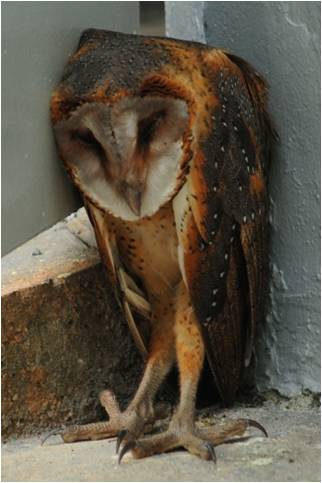
Fig. 40 : The barn owl Tyto alba has been used in the control of rats in oil palm plantation.
Aesthetical value of animals
People love to see beautiful, colourful things such as iridescent butterflies which fluttering gracefully in the air. They fly from one to another flower in order for sucking nectar by hovering in the air precariously. Dainty sunbirds are often hovered to suck sap from the flowers. Peacock that spread its tail demonstrates beauty that had been captured by artist and painters. The giant hornbill with its majestic bill has been a mascot for Sarawak, whilst orangutan is synonymous with Sabah and Borneo. Plants and animals have also been inspiration for artists such as singers, dancers and painters.
Moral value
Since animals can move and respond to stimuli, and some of them are morphologically and behaviourally similar to human, like the orangutan, it is much easier to relate moral value to them. Evolutionary, some people resemble so much of human that they could be mistaken to be the missing link between the monkeys and man. However, it is undeniable for major religions in the world that human are not originated from monkeys as they have their holy books that stated that mankind originated from Adam and Eve, two humans that have been created in heaven and thrown down to earth for some reasons.
It is morally wrong and offensive to destroy any creation of God, (whether or not associated with man). Some people may take the moral position that it is wrong to over-exploit. However, it is justifiable to exploit for the benefit of mankind, but not to the extent leading to extinction. Nearly all countries including Malaysia, have wildlife protection laws, prevention of cruelty to animals laws, codes of ethical conduct for governing laboratory work on animals, and animal protection societies. These are all measures of moral value attach to animals.
Optional values
As long as an animal continues to exist, there is the option of many possible uses in the future. As for example, useful chemicals might be found in sea urchins, corals, or marine mollusk, by future work. This can be valued economically by measuring (for instance) the amount that people or government is willing to set aside for their conservation.
ANIMALS IN AGRICULTURE AND INDUSTRIES
AGRICULTURE
Since ancient time, animals have been useful in agriculture. The use of cattle and water buffalo to till agricultural land is a well known protocol. Not only they till the land, these animals are also used to cart off agricultural products to markets. Feces of these animals and other animals too, like the chicken, goat, and sheep provide natural manure to make the land more fertile.
Besides providing labour, these animals also provide protein for people. More recently, however, Malaysian farmers are introducing more exotic animals in Malaysian agriculture including ostriches, rabbits, deer and even camels. Besides these massive animals, Malaysian agriculture also involved in aquaculture, where certain fish and prawn species are being mass reared to provide for the market: both local and international.
Pests
In agriculture, the common notion is that insects are pests. It is true for only about 10-15% of the insect species. The rest, comprising of about 850,000 species are beneficial insects and insects with unclear status. Common insect pests in Malaysia are normally related to plant groups. Top of the list would be pest of oil palm that includes the nettles caterpillars (Setora nitens) and rhinoceros beetles (Oryctes rhinoceros – as shown in Fig. 41). [57] Another way of categorizing insect pests is based on the way they damage their host. For storage food product pest, the most common would be the rice weevils, Sitophilus oryzae (Fig. 42). Besides insects, other animal pests of agriculture, include rats and squirrels, also eat fruits or nuts such as oil palm. For paddy fields, there major pests besides insects and rats are birds. In large plantations existing near some forest tracts, wild life may come out to feed on crops grown by farmers or even the economic crops in the plantation. A study showed that the human and wildlife conflicts at Segama and found the damage is substantial that it requires a good plantation management [58].

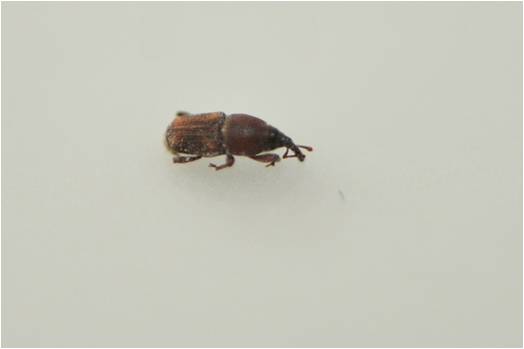
Biocontrol agents
Historically, Malaysia has been faithful users of chemicals in protecting crop against pest. Thus, there is a long list of insecticides, rodenticide, and molluscicides. However, as pests began to acquire resistance, and there are abuse of these strong chemicals, and adding on hazards to the users and fatal accidents due to excessive use of chemicals, scientist and plant protectionists are looking towards biocontrol. The searchs for biocontrol agents were rigorous. Some efforts were successful such the use of barn owls (Fig. 40) in the control of rats in oil palm plantation. It is quoted that more than 90% of palm oil produced in Malaysia brings in more than RM60 billion every year. [59] The efficient production of palm oil has partially to be related to the efficient pollinating process performed by the beetles named Elaeidobius kamerunicus which were imported from Africa (Fig. 43).
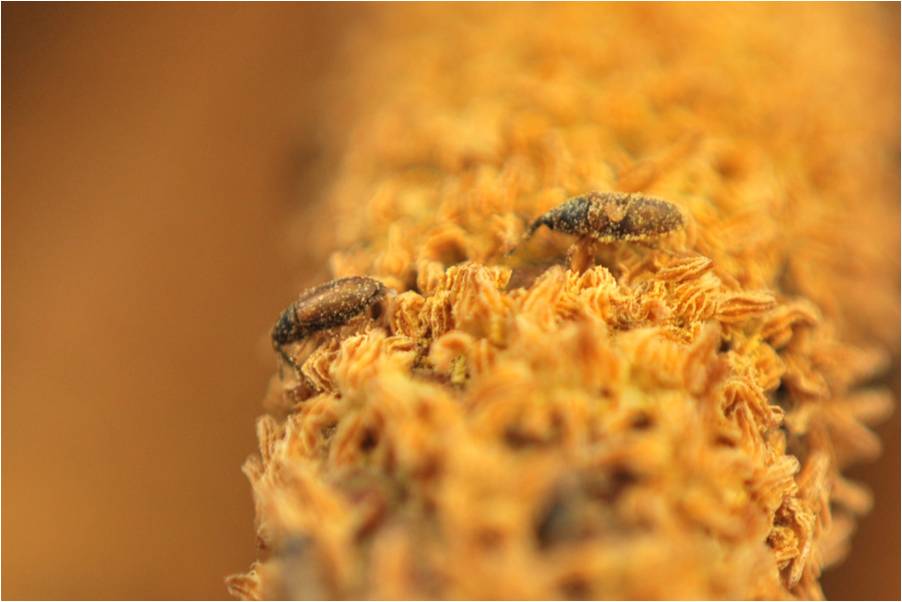
Fig. 43 : The marvelous oil palm pollinator that has boosted up the palm oil industry in Malaysia.
TOURISM INDUSTRY
There is a strong effort for Malaysia to excel in nature based tourism. Nature tourism in Malaysia will definitely include animals, besides the forest and sea. Currently, there are several tourism attraction comprises of animal. These include the orangutan, proboscis monkeys, Sumatran rhinoceros, elephants, tapirs, tigers, hornbills, migratory birds (egrets, heron and others), crocodiles, and turtles. Among the creepy crawlies, firefly is the most famous, although visiting butterfly farms and live exhibits is also becoming more attractive. Of recent product development, anuran or frog tourism is being promoted in Sabah, especially by a herpetologist Kelvin Kueh Boon Hee, a staff of the institute for Tropical Biology and Conservation of Universiti Malaysia Sabah. [60] Another innovative idea is to promote further other insect groups as tourism attractions [61].
Several surveys were done and one at Poring showed that there is an interest of tourist on insects [62]. Another survey done at the Crocker Range Park showed similar findings [63]. Most recent, however, is the spider especially black widow spider, the tarantula, at the Cameron Highlands and this was presented in one of the documentary shown on the television.
ANIMAL LABOUR
Since ancient time, animals have provided the labour needed in agriculture. The use of cows and buffaloes to till the land has been well documented in photographs and folk tales. To date, these two groups of animals are still being useful especially in remote villagers, where it is not possible to use machinery.
Animals such as cows and water buffaloes had been used to drag carts (Fig. 44). It is said that the so called bullock cart is a common transportation in olden days in state like Malacca. While in the state of Sabah, the ethnic Bajau is known as the horseman of Sabah. This is because they ride on horses as a main mode of transportation. In Sabah, once upon a time, elephants were used to drag timber out of the forest.
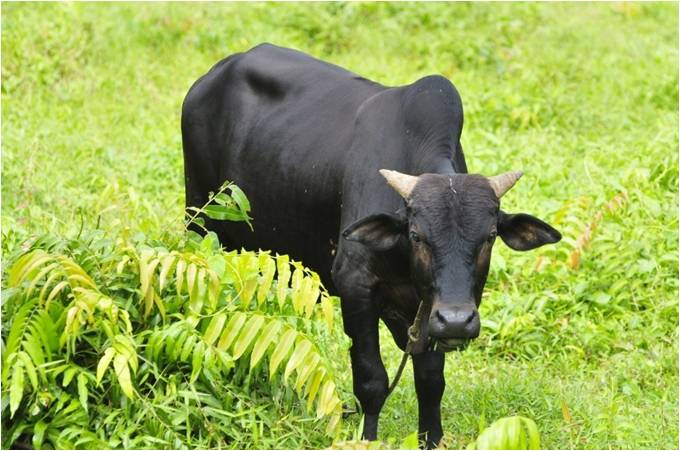
Fig. 44 : Cows have been used as transportation before.
ANIMALS IN CULTURE AND RITUALS
Some animals are special for Malaysians as they are part of the culture and rituals. For the Malay, when it calls for them to have special ritual like thanksgiving (bayar niat) they would slaughter a chicken. For the Chinese, each year is represented by specific animals. There are altogether, 12 kinds of animals and their representation is based on a rotation basis. As for Hindus, their sacred animals are elephant and cows. One of their deity lord Ganesha has a head of an elephant and cows provide them milk which is associated with life.
ANIMALS IN HEALTHCARE
In a modern society, the use of animals in medicine is rarely reported, except in the production of anti-venom/vaccine. However, some animals had been used traditionally and now being slowly accepted as useful medically. One example is the use of Hirudo medicinalis (the leech). Fig.45 shows a leech being used in blood-letting, supposedly able to relief many diseases including hypertension. Leeches are let into an intact coconut through a small opening. Once they have increased in size, these leeches are boiled to obtain extract of their body oil. This oil called minyak lintah (leech oil) is said to have aphrodiasiac values and used in massaging males. However, it is also available to find leeches being used in surgeries, as in hospitals in Malaysia. As leech saliva contains chemicals with anticoagulant properties; a leech that suck blood from a surgery site would prevent coagulation and thus ensure a more rapid healing in surgery.
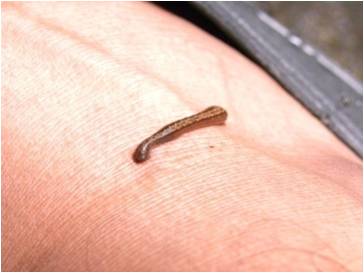
Fig. 45 : Hirudo medicinalis is used in traditional blood-letting by local people.
Another use of animal in medical sector is the use of maggots/larvae of flies to clean infected wounds. Families of fly such as Calliphoridae, (Fig. 46), the greenbottle or bluebottle, is used to clean wound that has been infected and not easily managed through conventional medical procedures.
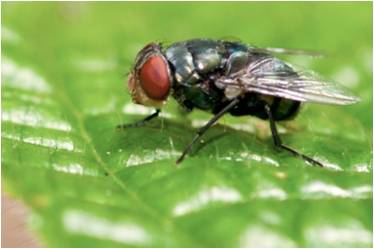
Fig. 46: Maggots from flies of the family Calliphoridae (blue bottles) is now being used to clean wounds.
Some other traditional uses of animals include the use of dried sea-horses (Fig. 47) for asthma. These could be purchased in street market such as Gaya Street Market in Sabah, Malaysia. The dried animals would be boiled in water as to drink the decoction obtained.
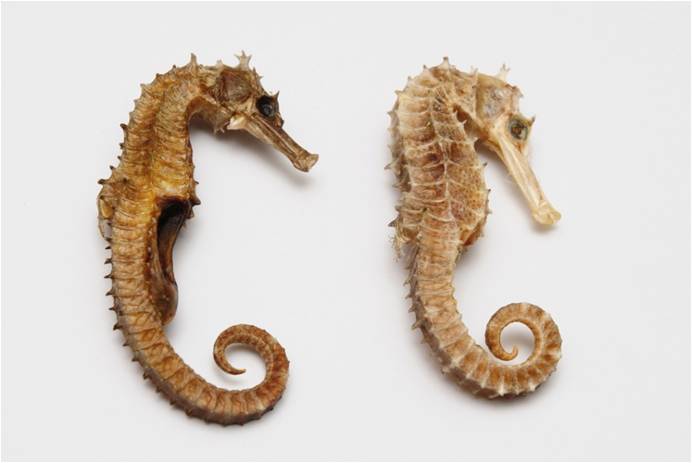
Fig. 47 : A pair of dried sea horses; the bigger one with a swollen body is the female.
The use of insects by ethnics is termed as enthnoentomology–for medicinal values, decoration, food, and other uses. In Africa, it was said that the weaver ant species Oecophylla longinoda was consumed to alleviate the rheumatic pain. The second species of weaver ants can be found in Southeast Asia, includes Malaysia and it is known as Oecophylla smaragdina (Fig. 48). This ant is voracious and will squirt formic acid from its anal gland to protect itself. Formic acid has a tangy sour taste. Some Dusun communities in Sabah [64] consume adults Oecophylla smaragdina. Eggs of this species are consumed by people in the Indochina– Thailand, Vietnam, and Cambodia. Eggs are harvested from nest and cooked in eggs as omellete or in porridge. Larvae are used by fishermen as baits.
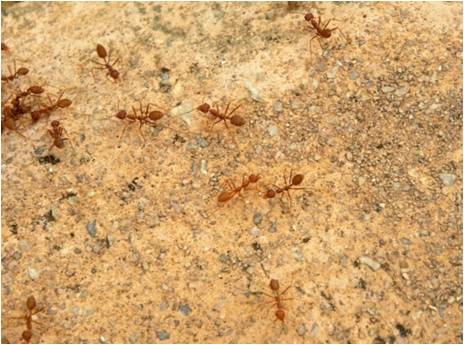
Fig. 48 : Known locally as kerengga, weaver ants (Oecophylla smaragdina) can be useful as food.
Bats are also used by certain ethnic to cure asthma such as dried bats in bottles to be sold as medicines. Another animal that is much sought after is the rhino. It is believed among the elderly folks that the horn of the rhino has medicinal properties as well as aphrodisiac value. Years before, people in Malaysia believed that the rhino water (presumably from its horn) could relieve fever. However, it is now banned from use.
ANIMALS AS PETS
Just like any other nationalities, Malaysian too loves pets. And the common pet groups in Malaysia are included fish, birds, cats, dogs, and horses. Fish kept in home aquaria are normally colourful with distinct features like large and beautiful fins and tails, scales with colourful pattern, and unique body shape. However, some kinds of fish are being kept at home and made as pet because of different kinds of belief uphold by different ethnics/cultures.
There are several varieties of cats kept as pets by Malaysians such as Persian cats and Siamese cats. Similarly, dogs are comprised of many breeds. The larger ones are like Alsatian and Labrador. The tiny ones are pedigree such as a poodle. In Fig. 49 are shown some common pets in Malaysia.
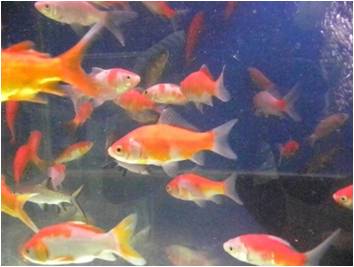
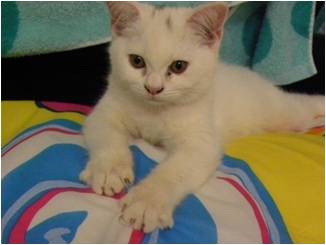
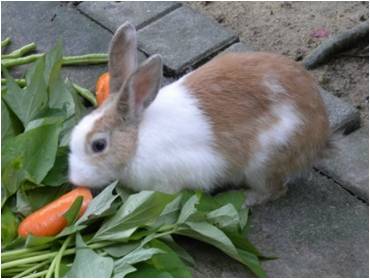
Fig. 49 : Some common pets in Malaysia.
CONSERVATION OF ANIMALS
Sometimes people cannot understand why wildlife such as elephant, rhino and tigers need to be conserved. Many ecologists had given various reasons for wildlife conservation. However, in order to conserve tiger is to conserve its habitat – the forest [65]. Conserving the forest of the tigers means protecting major watersheds of Asian river systems such as the Ganga, Brahmaputra, Irrawaddy, and Mekong. These forests regulate the flow of water after seasonal rains and protect soil underneath from erosion, and therefore survival of these forests is therefore critical to the welfare of millions of farmers who depends on the soil-water resources.
In Malaysia, there are several efforts to conserve wildlife. In Endau Rompin, one of the bigger stretches of tropical rainforest in Peninsular Malaysia, the Tiger are Forever programme targets at protecting and conserving the Bengal Tiger. In Sabah, the Kinabatangan Orang-Utan Conservation programme focuses on the protection and conservation of Orangutan. The Save our Sumatran Rhino Programme also in Sabah, is for the protection and conservation of the Sumatran rhinoceros. In the marine ecosystem, turtles have been one of the animals that receive attention in conservation. So are the coral reefs.
Conserving iconic animals like elephant, tiger, and rhino will definitely involve major effort to conserve its habitat. This would definitely fall back to various state governments of Malaysia to be involved as forestries are state matters. However, it is now interesting to note that sometimes, these wildlifes are found abundant in logged over forest or even in plantation. When this happen, there is a need for the owners of the land to participate in conservation. The recent colloquium on orangutan (Pongo pygmaeus) in Kota Kinabalu, Sabah, showed the commitment of the Malaysian government in the conservation of the species by declaring and supporting compulsory land acquisition to save orangutan.
For the herpetofauna like snakes, lizards, and crocodiles, the leather production has had serious effects on these species. [66] However, for example, with the setting up of crocodile farms, this issue could be addressed appropriately.
Besides in-situ conservation, there are ex-situ conservation efforts being carried out. Zoos are good example of ex–situ conservation efforts for wildlife. In Malaysia, there are zoos that are also involved in conservation. One good example is the Malacca Zoo that has long been trying to breed in captivity the Sumatran rhino (Dicerorrhinus sumatrensis). Wildlife sanctuary has also been contributing tremendously in conservation. A well known example is the Sepilok Orang-Utan Rehabilitation Centre, in Sandakan, Sabah.
Another issue in conservation is invasive species. In Malaysia, there are several examples of invasive species currently receiving attention by the various authorities.
Invasive species
TILAPIA
In Malaysia, this invasive group of fish is called tilapia (family Cichlidae–Fig. 50) and in Sabah it is known as ikan karuk. They are originally distributed from Africa to south-western Middle East. The first introduction was believed to happen during 1930s from an aquarium release in Java, of the Mozambique tilapia Oreochromis mossambicus. The introduction and spread continued throughout World War II (1942). Introduction had been unintentional and intentional through cages and pond cultures, fishery stocks enhancement (stocking), use in biocontrol, bait, and for hobby aquaria.
It was obvious from cultures in ponds and aquarium that tilapia is able to displace native fish species. In the natural environment, this exclusion phenomenon displaces native fish species from prime breeding ground. They are voracious feeding on other fishes. The one strong attribute of tilapia is the ability to breed for a long period of time. In some place they are reproductively active almost the year round. With short reproductive cycles and fecundity, tilapia builds up population rapidly. They are also protective over their young and in shallow ponds could be seen rigorously guarding their brood in nests.
Through water eutrophication where there is enrichment of nutrients such asnitrogen and phosphorus has led to increased production of organic matters, that will enhance the capability of tilapia to reproduce. Fig. 50 shows a black tilapia fish. During a survey in 2004, it was found guppy species (Peocilia reticulate) and tilapia in rivers of the Crocker Range, in Sabah [76]. Rivers of Crocker Range harbor the endemic sucker fish of Borneo, Gatromyzontidae and since these two species are known to be invasives, this is an alarming situation.
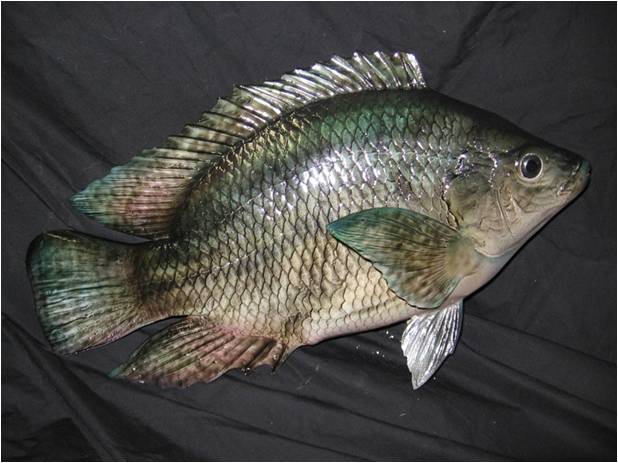
Fig. 50 : A black tilapia.
AFRICAN CATFISH (Clarias gariepinus)–Ikan Keli Afrika
African catfish was brought to Malaysia as part of aquaculture programme to increase catfish yield. They are bigger than the normal catfish and is supposedly able to increase income of farmers. Although, currently not much negative reports had been documented, the fact remains that this huge catfish will require a lot of food supply and if escape into the natural surrounding will prey on native smaller freshwater fishes. An alert system should be in place to mitigate possible problem from this species.
THE INDIAN HOUSE CROW (Corvus splendens)-Burung gagak
This bird was first introduced in 1950s to assist in getting rid of coffee pests. It is also reported that they are introduced to Malaysia as biocontrol agent of rhino beetles (Oryctes rhinoceros) in oil palm estates. Now, the number has increased tremendously and have been scavenging human dwellings. It also strips fruit trees in orchards and deciminate grain crops, eating chicks of domestic poultry and been reported pecking at eyes of sheep and pigs. They will enter homes and scavenge on human food. The problems with crow is that it way spread bacteria and viruses especially in their feces, and has been blamed for causing power cuts as they construct nests in wires in electric pylons.
GOLDEN APPLE SNAIL – Siput gondang
It was native to Latin America. It was brought to Malaysia to be raised as food, but was unsuccessful. First reported was from Smeling in Kedah in 1991. In Sabah, it was reported from Keningau in 1992. This gastropod/snail would destroy paddy on large scale. The Department of Agriculture Malaysia proposed opening irrigation canals with sea water by opening coastal water-gate during high tide to kill these snails. However, this procedure will require careful execution, as impregnation of freshwater ecosystem by salt water should be avoided at all cost. Ducks had been successfully used on small scale to decrease the snail population.
Threats
Table 15 shows the number of endangered species for each animal group, in Malaysia. It is relatively high for mammals when 42 out of 268 species are designated as endangered. This means that 15% of Malaysian mammals are endangered. Some threats are man-made and few are naturally occurring. The natural threats are like floods, volcanic eruptions, and land-slides. Man made threats include forest fire, deforestation, and domestication.
For birds, there is a 4.6% of endangered species and for reptiles 5.2%. Although, 14 species of fish were identified as endangered but there were not specified either marine or freshwater fishes. There was no figure available for amphibian. As for invertebrates, the three endangered species are definitely a very low number. There could be more than three which are endangered because there is not enough research had been carried out to come out with a more realiable number.
Table 15 : Malaysian known fauna diversity and number endemic and endangered. [1]
| Total Species | No. of thrreatened species | % endangered | |
| Mamals | 286 | 42 | 15.4% |
| Birds | 736 | 34 | 4.6 % |
| Reptiles | 268 | 14 | 5.2% |
| Amphibian | 158 | N/A | |
| Marine fishes | 4000 | 14 (not specified either fresh or marine) | |
| Freshwater fishes | 449 | 14 (not specified either fresh or marine) | |
| Invertebrates | 150,000 | 3(maybe more) |
(Source : IUCN 1996)
REFERENCES
- MOSTE 1997 Assessement of Biological diversity in Malaysia Ministry of Science, technology and the Environment 186pp
- World Conservation Monitoring Centre 1992 Global Biodiversity Chapman & Hall, London
- Gleich, M., Maxeiner, D., Miersch, M. & Nicolay, F. 2000 Cataloguing life on earth : Life Counts Atlantic Monthly Press, New York, 284pp
- Daly, H.V., Doyen, J.T. & Purcell, A.H. 1998 Introduction to insect biology and diversity (2nd edition) Oxford University Press 680pp (p: 3)
- Miller & Harley, 2008
- Paniker, JKC 2007 A textbook of medical parasitology Jaypee Brothers Medical Publisher (p) Ltd. New Delhi, India (p: 3)
- MONRE 2006 Biodiversity in Malaysia 2nd ed. Ministry of Natural Resources and Environment (p: 3)
- BBEC 2009 Programme Completion Report on Phase I Bornean Biodiversity and Ecosystem Conservation Programme in Sabah Malaysia (p: 6)
- Mader, S.S. 2008 Biology McGraw Hill International Edition 952pp (p: 562-563)
- Jessop, N.M. 1988 Theory and problems of Zoology McGraw International Edition 484pp (p:280-302)
- Villee, C.A., Walker, W.F.Jr. & Barnes, R.D. 1984 General Zoology Holt-Saunders International Edition 856pp (p: 651)
- Allen, 2000
- Chin P.K. 1998 Fresh water fishes of Kinabalu and surrounding areas In : Wong, K.M. & Phillipps, A. (eds) Kinabalu : Summit of Borneo (A revised and expanded edition) Sabah Society & Sabah Parks pp:333-352 (333)Martin-Smith,K., Abdullah Samat, Tan, S.H. & Tan, H.T. 1998 The fish and crustacean fauna of Maliau Basin, Sabah In : Maryati Mohamed, Sinun, W., Anton, A., Dalimin, M.N. & Ahmad, A.H. Maliau Basin Scientific Expedition 1996 Universiti Malaysia Sabah pp: 119-132 (p:119)
- Hazebroek, H.P., Adlin, TZ & Sinun, W. 2004 Maliau basin : Sabah’s lost world Natural History Publication
- Mohd. Nadzri Ishak, Maryati Mohamed, Markus Jopony, & Arifin Aw. Ali 1999 An Icthyofauna of Tabin Wildlife Reserve, Lahad Datu, Sabha In : Maryati Mohamed, Andau, M., Dalimin, M.N. & Titol, P.M. (eds) Tabin Scientific Expedition Universiti Malaysia Sabah pp: 129-137 (p:129)
- Mohd. Fairus Jalil, Arifin Aw. Ali, Mohd. Nadzri Ishak, Lucy Kimsiu & Maryati Mohamed 2004 Updates and revisional notes on the freshwater fish of Crocker Range Park In : Maryati Mohamed, Zulhazman Hamzah, Tachi, T. & Nais, J. (eds) Crocker Range Scientific Expedition 2002, Universiti Malaysia Sabah.pp:99-102 (p: 100, 101)
- Tan, , H.H. 2006 The Borneo Suckers Natural History Publications (Borneo) Kota KInabalu pp: 245) (p: 2).
- Jimmy, O.E., Maryati Mohamed, Arifin Ag. Ali & Kimsui, L. 2006 Ichtyofaunal survey in tributaries of Lower Segama region In : Maryati Mohamed, Bernard, H., Sofian Abu Bakar & Matsunaga, R. (eds) Lower Segama Scientific Expedition, Universiti Malaysia Sabah pp:11-16 (p: 11)
- Chin, P.K. 1996 Fresh water fishes of Kinabalu and surrounding areas In : Wong, K.M. & Phillipps, A. (eds) Kinabalu : Summit of Borneo (A revised and expanded edition) Sabah Society & Sabah Parks pp:333-352 (333)
- Samat, A., Shukor, M.N., Mohd. Yusof Ahmad & Mazlan, A.G. 2005 Fishes of torrential unnamed tributaries of Sungai Galas in Gunung Stong area In : Shaharuddin M. Ismail, Dahalan, T. Shafie, A.S., Jalil abatan Perhutanan Semenanjung Malaysia pp:206-214 (206)
- Amirrudin, A., Ahyaudin, A. & Mansor, M. 2001 Freshwater fishes of Wang Kelian, Perlis State Park, In : Faridah Hanum, I., Osman, K. & Latiff, A. (eds) Kepelbagaian Biologi dan Pengurusan Taman Negeri Perlis : Persekitaran Fizikal, dan Biologi Wang Kelian Jabatan Perhutanan Perlis pp: 111-121 (p: 111)
- Samat, A., Amirudin Ahmad, Usup, G. & Maimon Abdullah 2002 Fishes of Perlis State Parks with reference to their habitats and conservation In: Latiff, A., Kasim Osman, Yusoff, A. Rahman & Faridah Hanum, I. (eds) Kepelbagaian Biologi dan Pengurusan Taman Negeri Perlis : Persekitaran Fizikal, Biologi dan Sosial Wang Mu Taman Negeri Perlis & Jabatan Perhutanan Perlis pp :135-147 (p:135)
- Zakaria, M.I. & Fatimah, A. 2006 The fish fauna of Hulu Selai river system, Endau Rompin National Park, Johor, Malaysia In : Mohamed, H. & Zakaria, M.I. (eds) The forest and biodiversity of Selai, Endau RompinUniversity Malaya, Kuala Lumpur pp: 191-198 (p: 191)
- Atack, K. 2006 A field guide to the fishes of Kuching River Natural History Publication (Borneo) 200pp
- Inger, R.F. & Stuebing, R.B. 1997 A field guide to the frogs of Borneo Natural History Publication (Borneo) 205pp (p: 1)
- Hickman,C.P.Jr., Roberts, L.S., Keen, S.L., Larson, A. & Eisenhour, D.J. 2009 Animals Diversity 5th ed. Mc Graw Higher Education p: 347
- Hamid, A.A. & Wong, A. 1998 The amphibian fauna of the Maliau Basin In : Maryati Moahmed, Waidi Sinun, Ann Anton, Mohd. Noh Dalimin & Abdul Hamid Ahmad (eds) Maliau Basin Scientific Expedition Universiti Malaysia Sabah pp : 133-138 (p: 133)
- Kueh, B.H., Ahmad Sudin., Matsui, M. & MaryatiNotes on the anuran of Crocker Range Park In : Maryati Mohamed, Zulhazman Hamzah, Tachi, T. & Nais, J. Universiti Malaysia Sabah pp:103-112 (p: 103)
- Inger, R.F. Stuebing, R.B. & Tan, F.L. 1996 Frogs and Toads In : Wong, K.M. & Phillipps, A. (eds) Kinabalu : Summit of Borneo (A revised and expanded edition) Sabah Society & Sabah Parks pp:353-368 (p: 353)
- Norhayati, A., Zaiton, S., Juliana, S. & Shukor, M.N. 2005 kepelbagaian dan kelimpahan amfibia di Hutan Simpan Gunung Stong, Kelantan In : Shaharuddin M. Ismail, Dahalan, T. Shafie, A.S., jalil Md. Som., Hanum, F.I. & Latiff, A. (eds) Taman Negeri Gunung Stong, Kelantan : Pengurusan, Persekitaran Fizikal, Biologi dan Sosio-ekonomi Jabatan Perhutanan Semenanjung Malaysia pp:180-190 (p: 180)
- Norhayati, A., Shukor, M.N. & Juliana, S. 2005 Inventory of herpetofauna at gunung Basor Forest reserve, Kelantan In : Shaharuddin M. Ismail, Dahalan, T. Shafie, A.S., jalil Md. Som., Hanum, F.I. & Latiff, A. (eds) Taman Negeri Gunung Stong, Kelantan : Pengurusan, Persekitaran Fizikal, Biologi dan Sosio-ekonomi Jabatan Perhutanan Semenanjung Malaysia pp: 191-198 (p:191)
- Ibrahim, J., Mohd. Ali Ektella & Shahrul Anuar Mohd. Sah 2001 Diversity of amphibian at Taman Negeri Perlis, Wang Kelian In : Faridah Hanum, I., Osman, K. & Latiff, A. (eds) Kepelbagaian Biologi dan Pengurusan Taman Negeri Perlis : Persekitaran Fizikal, dan Biologi Wang Kelian Jabatan Perhutanan Perlis pp: 123-127 (p: 123)
- Daicus, B. & Hashim, R. 2006 Amphibians of the Lubuk Tapah and adjacent areas in Southwestern Endau-Rompin National Park, Johor, Malaysia In : Mohamed, H. & Zakaria, M.I. (eds) The forest and biodiversity of Selai, Endau Rompin University Malaya, Kuala Lumpur pp:199-204 (p: 199)
- Das, I. 2006 Snakes and other reptiles of Borneo New Holland Publishers (UK) 144 (p: 7, 18)
- Stuebing, R.B. & Inger, R.F. 1999 A field guide to the snakes of Borneo Natural History Publications (Borneo) Kota Kinabalu (
- Mortensen, K.H. 2004 The tortoise Manouria emys emys : behavior and habitat in the wild MSc thesis University of southern Denmark (Unpublished) (abstract)
- Sharma, D.S., Ahmad Zafir Abdul Wahab, Surin Suksuwan, Norhyati, A., Darmaraj, M.R. & Ansel, O. 2005 A note on the reptiles observed at Gunung Stong Forest Reserve, gunung Basor Forest Reserve and around jeli, Kelantan In : Shaharuddin M. Ismail, Dahalan, T. Shafie, A.S., Jalil Md. Som., Hanum, F.I. & Latiff, A. (eds) Taman Negeri Gunung Stong, Kelantan : Pengurusan, Persekitaran Fizikal, Biologi dan Sosio-ekonomi Jabatan Perhutanan Semenanjung Malaysia pp: 199-205 (p: 199)
- Sharma, D.S., Shahrul Anuar Mohd. Sah, Sharma, R.S.K. & De Cruz R.M 2001 The reptilian fauna of Perlis State Park at Mata Ayer and Bukit Wang Mu Forest Reserve In : Faridah Hanum, I., Osman, K. & Latiff, A. (eds) Kepelbagaian Biologi dan Pengurusan Taman Negeri Perlis : Persekitaran Fizikal, dan Biologi Wang KelianJabatan Perhutanan Perlis pp: 129-137 (p: 129)
- In : Maryati Mohamed, Sinun, W., Anton, A., Dalimin, M.N. & Ahmad, A.H. Maliau Basin Scientific Expedition 1996 Universiti Malaysia Sabah p:119
- Vaz, J. (1993) The Kinabatangan floodplain : An introduction WWF Malaysia (p:33)
- Jenkins, D.V., De Silva, G.S. (revised by Wells, D.R & Phillipps, A.) 1996 An annotated checklist of the birds of Kinabalu Park In : Wong, K.M. & Phillipps, A. (eds) Kinabalu : Summit of Borneo (A revised and expanded edition) Sabah Society & Sabah Parks pp:397-438 (p: 397)
- Shahrul Anuar, M.S., Shukor, M.N., Norzalipah, M., Nurul Ain, E., Yusof Ahmad., Rahim, A., Puan, C.L., Yusuf, O., Nazri, A. & Kalimithu, S.N. 2005 Bird survey of Gunung Stong Permanent Forest Reserve In : Shaharuddin M. Ismail, Dahalan, T. Shafie, A.S., jalil Md. Som., Hanum, F.I. & Latiff, A. (eds) Taman Negeri Gunung Stong, Kelantan : Pengurusan, Persekitaran Fizikal, Biologi dan Sosio-ekonomi Jabatan Perhutanan Semenenajung Malaysia pp : 215-226 (p: 215)
- Shahrul Anuar Mohd. Sah, Shukor, M.N., Mohd. Hifni Baharuddin, Yusoff Ahmad, Ganesan, M. & Mohd. Zulkifar Kamil 2001 Tinjauan burung di Tasik Meranti, Wang Kelian, Taman Negeri Perlis In : Faridah Hanum, I., Osman, K. & Latiff, A. (eds) Kepelbagaian Biologi dan Pengurusan Taman Negeri Perlis : Persekitaran Fizikal, dan Biologi Wang Kelian Jabatan Perhutanan Perlis pp: 167-179 (p: 167)
- Shahrul Anuar Mohd. Sah, Shukor, M.N., Wong, R., Yusoff Ahmad, Muthaiya, G. & A.K. Jalaludin Pg. Besar Tinjauan burung di Hutan Simpan Wang Burma dan Wang Mu, Taman Negeri Perlis In: Latiff, A., Kasim Osman, Yusoff, A. Rahman & Faridah Hanum, I. (eds) Kepelbagaian Biologi dan Pengurusan Taman Negeri Perlis : Persekitaran Fizikal, Biologi dan Sosial Wang Mu Taman Negeri Perlis & Jabatan Perhutanan Perlis pp : 173-189 (p: 173)
- Noramly, G. & Kumar, K. 2002 A report of the bird survey at Perlis State Park especially at Wang Burma In: Latiff, A., Kasim Osman, Yusoff, A. Rahman & Faridah Hanum, I. (eds) Kepelbagaian Biologi dan Pengurusan Taman Negeri Perlis : Persekitaran Fizikal, Biologi dan Sosial Wang Mu Taman Negeri Perlis & Jabatan Perhutanan Perlis pp : 191-208 (p: 191)
- Ramli, R., Daicus, B. & Hashim, R. 2006 A preliminary checklist of birds at Lubuk Tapah, Endau Rompin National Park, Johor, Malaysia In : Mohamed, H. & Zakaria, M.I. (eds) The forest and biodiversity of Selai, Endau Rompin University Malaya, Kuala Lumpur pp:205-210 (p:
- Payne, J., Francis, C.M. & Phillipps, K. 1985 A field guide to the mammals of Borneo The Sabah Society & WWF (Malaysia) 332 pp
- Nurzhafarina, O., Maryati Mohamed, Ahmad, A.H. Nathan, S., Pierson, H.T. & Goossens, B. 2008 A preliminary study on the morphometrics of the Bornean elephant Journal of Tropical Biology and Conservation , 4(1) : 109-113 (109)
- In : Maryati Mohamed, Sinun, W., Anton, A., Dalimin, M.N. & Ahmad, A.H. Maliau Basin Scientific Expedition 1996 Universiti Malaysia Sabah p:119
- Payne, J. 1996 Mammals In : Wong, K.M. & Phillipps, A. (eds) Kinabalu : Summit of Borneo (A revised and expanded edition) Sabah Society & Sabah Parks pp:439-454 (p: 439)
- Shukor, M.N.., Shahrul anuar, M.S., Nurul An, E., Norzalipah, M., Norhayati, A., Nadzri, A. Yusoff Ahmed. Mohd. Yusof, O., Ganesan, M. & Kalimuthu, S. 2002 Tinjauan mamalia kecil di hutan simpan Gunung Stong In : Shaharuddin M. Ismail, Dahalan, T. Shafie, A.S., jalil Md. Som., Hanum, F.I. & Latiff, A. (eds) Taman Negeri Gunung Stong, Kelantan : Pengurusan, Persekitaran Fizikal, Biologi dan Sosio-ekonomi Jabatan Perhutanan Semenenajung Malaysia pp :227- (p:227)
- Shukor, M.N., Shahrul Anuar Mohd. Sah., Mohd. Hifni Bahruddin, Yusoff Ahmad, Ganesan, M. & Mohd. Zulfikar Kamil 2001 Tinjauan mamalia kecil di Tasil Meranti, Taman Negeri Perlis In : Faridah Hanum, I., Osman, K. & Latiff, A. (eds) Kepelbagaian Biologi dan Pengurusan Taman Negeri Perlis : Persekitaran Fizikal, dan Biologi Wang Kelian Jabatan Perhutanan Perlis pp: 181-192 (p:181)
- Shukor, M.N., Shahrul Anuar, M.S., Wong, R., Yosoff Ahmad, Ganesan, M. & Jalaludin Pg. Besar A.K. 2002 Ekologi dan kepelbagaian mamalia kecil da kelawar di hutan simpan Wang Burma, Taman Negeri Perlis In : Latiff, A., Kasim Osman, Yusoff, A. Rahman & Faridah Hanum, I. (eds) Kepelbagaian Biologi dan Pengurusan Taman Negeri Perlis : Persekitaran Fizikal, Biologi dan Sosial Wang Mu Taman Negeri Perlis & Jabatan Perhutanan Perlis pp : 209-231 (p: 209)
- Mohd-Zain, S.N. & Syed Arnez, A.S.K. 2006 Parasitofauna of the wild rat population at Selai, Endau Rompin national park, Johor, Malaysia In : Mohamed, H. & Zakaria, M.I. (eds) The forest and biodiversity of Selai, Endau Rompin University Malaya, Kuala Lumpur pp:211-218 (p: 211)
- PTNJ 2007 Pictorial guide to Endau Rompin Perbadanan Taman Negara Johor (p: 46)
- Khoo, K.C., Ooi, P.A.C. & Ho, C.T. Crop pests and the management in Malaysia Tropical Press Sdn Bhd., Kuala Lumpur (p: 50, 108)
- Kertijah, A.K. 2006 Human-Wildlife conflict in Tabin Wildlife Reserve, Lahad Datu, Sabah MSc Thesis Universiti Malaysia Sabah (unpublished).
- Maryati Mohamed Entomology : Inroduction In : Maryati Mohamed, Rahman, H., Tachi, T. & Dawood, M.M. (eds) Introduction to entomology BBEC Publication No. 21 (p: 11, 12)
- Kueh, B.H. 2005 Anuran tourism in the Crocker Range Park: Convergence of research and local people involvement towards conservation In: Ambu, L.N. & Titol, P.M. (eds) Towards Converging Community involvement in protected area management in Sabah : Issues and Challenges Proceeding of the 10th Inter-agency Tropical Ecosystem (SITE) Research Seminar BBEC Publication No. 54 pp:57-68.
- Maryati Mohamed 2000 Entotourism. Paper presented at the First Sabah Tourism Symposium, 17-18th October 2000, Kota Kinabalu, Sabah
- Woon, H.Y. 2003 Potensi serangga sebagai produk pelancongan Alam Semulajadi BSc Thesis Universiti Malaysia Sabah (unpublished).
- Boby Tamat 2004 Entopelancongan di Taman Banjaran Crocker, Ulu Kimanis, Papar, Sabah BSc Thesis, Universiti Malaysia Sabah (unpublished) – abstract
- Chung, A.Y.C. 2008 An overview of edible insects and entomophagy in Borneo In: Proceeding UN-FAO Workshop on Edible forest insects : Humans bite back 19-21 February 2008, Chieng-Mai Thailand pp: 141-150 (p: 141)
- Karanth, K.U. 2006 The way of the tiger University Press (India) private Ltd., Hyderabad, India 123 (p:2-3)
- Cox, M.J., van Dijk, P.P. & Nabhitabhata & Thirakhupt 1998 A photographic guide to snakes and other reptiles of peninsular malaysia, Singapore and thailand New Holland Publishers (UK) pp 144 (p: 10)


